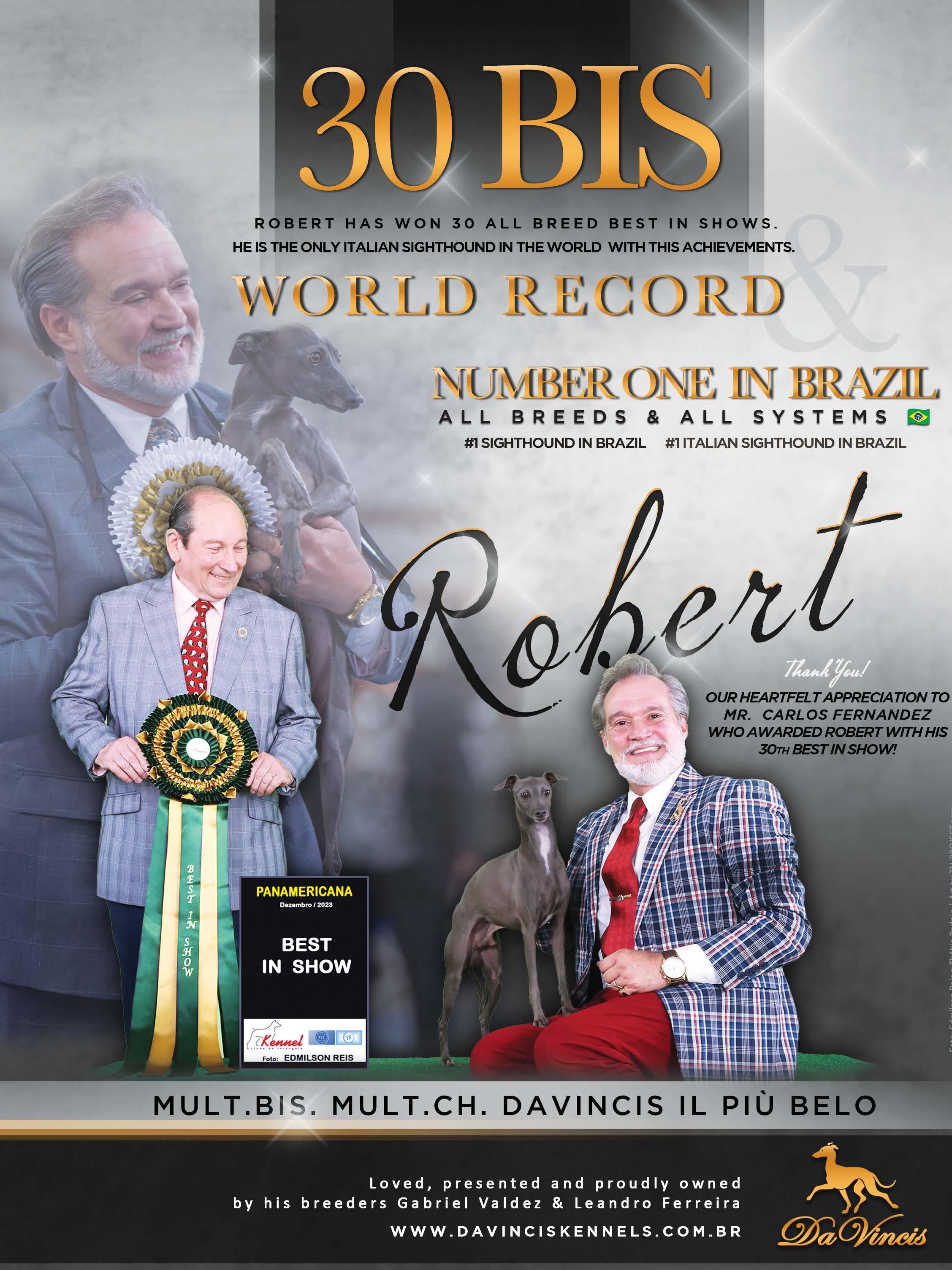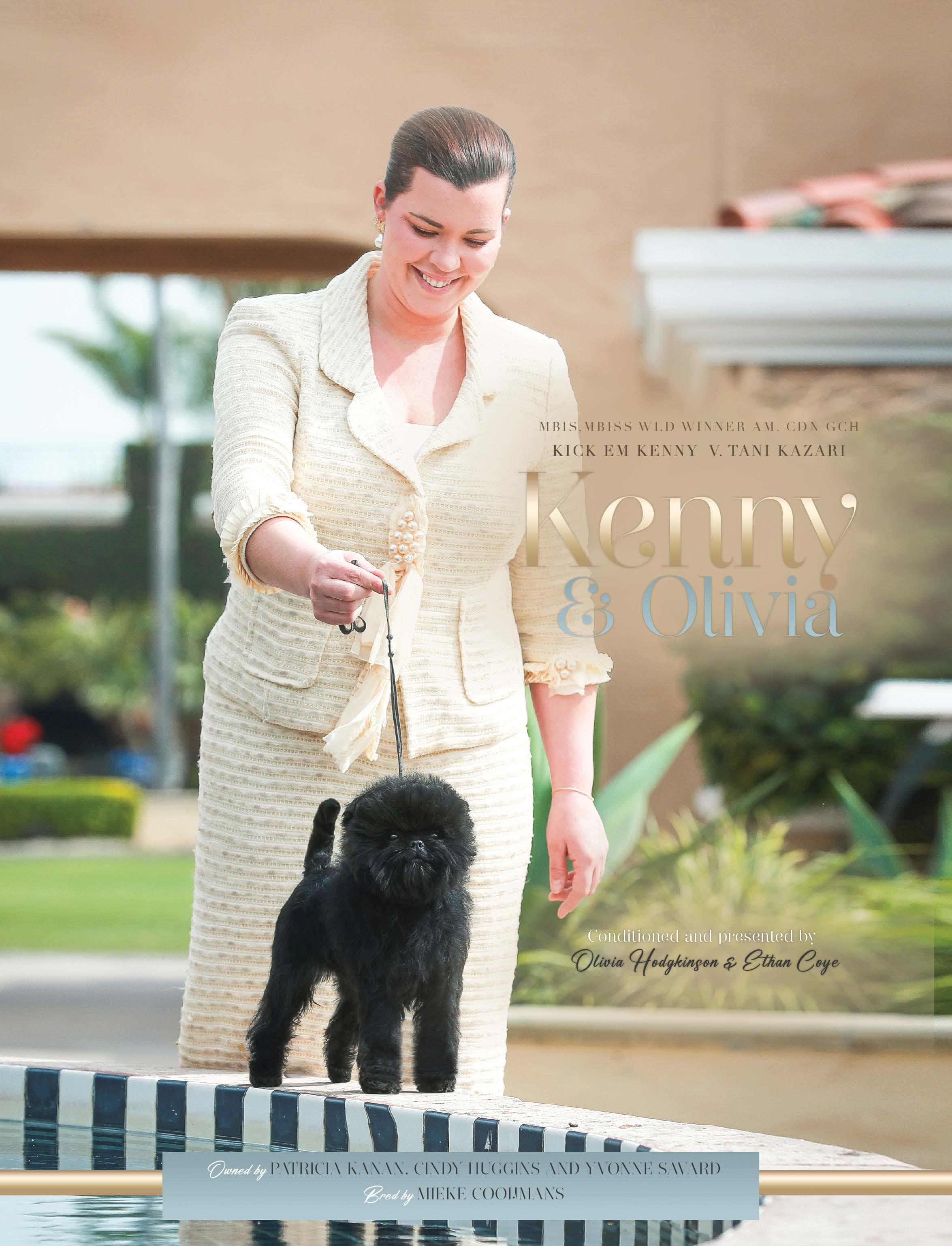












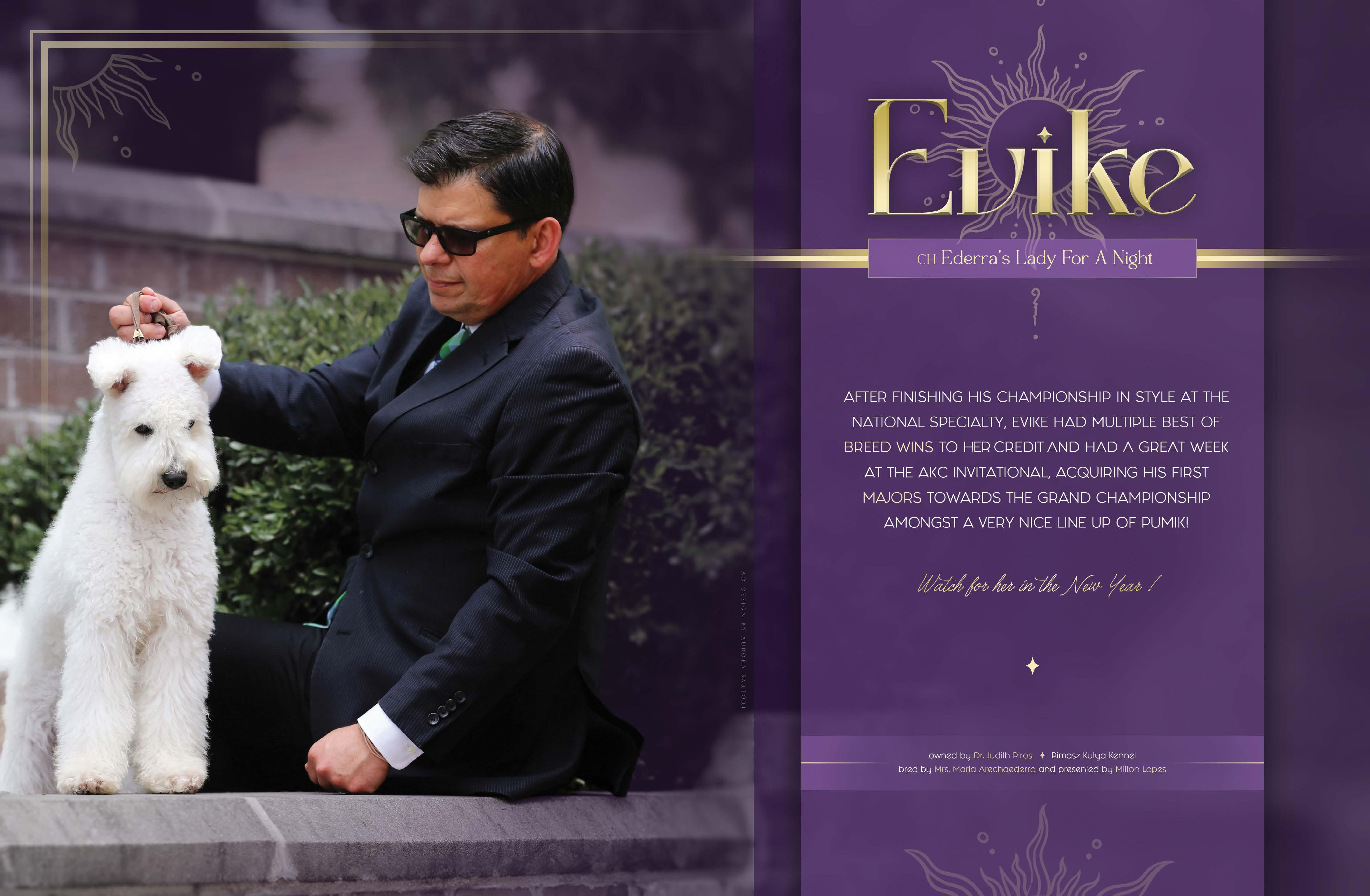

















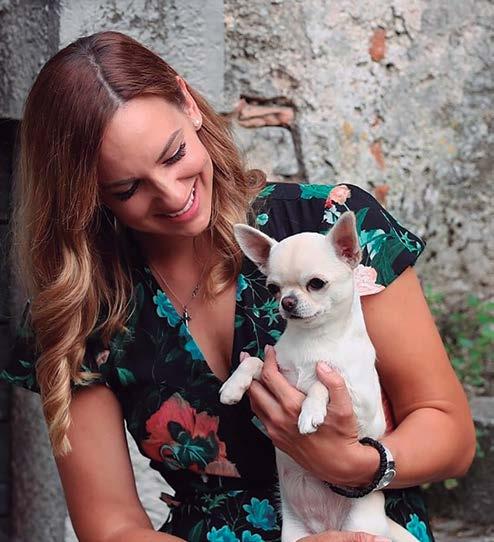
Dear Readers,
Welcome to the very first edition of our magazine for 2024! As we turn a new leaf in the calendar, we embark on a journey filled with anticipation and excitement. This year promises to bring new stories, insights, and inspirations for all our readers, both two-legged and four-legged.
At the outset, we extend our heartfelt wishes to all the dogs that retired at the end of 2023. May your days be filled with endless joy, cozy naps on the couch, and all the treats you can dream of. Your legacies on the show circuit have left indelible marks, and now, it’s time for you to enjoy the retirement you so richly deserve.
For those magnificent canines who will continue to grace the show rings in 2024, we are brimming with optimism for your careers. May this year bring you unprecedented success, accolades, and the kind of fulfillment that only the spotlight can provide. Your journey is a testament to the beauty, grace, and intelligence of our beloved companions.
This edition holds a special place in our hearts as it is the pre-Westminster edition, setting the stage for one of the most prestigious events in the dog show calendar. We are thrilled to feature an exclusive piece on one of the most beautiful dog shows in the USA, held in Palm Springs, brilliantly captured through the lens of Kaitlyn Price. Her narrative and visuals bring to life the essence of the event, making us all feel as if we’re right there in the midst of the excitement.
I am also incredibly excited to share with you my very first story, a personal recount of my travels to Alaska. This story is close to my heart, and I hope it brings you as much joy and wonder as it brought me in experiencing and writing it.
It is with great pride that we welcome Jacquelyn Fogel to our editorial board. Jacquelyn brings a wealth of knowledge, passion, and vision to our team. We are confident that her contributions will enrich our magazine and inspire our readers.
Having her on board is not just an addition to our team; it’s a milestone that signifies our commitment to delivering quality content and diverse perspectives. We couldn’t have reached this point without the support of our readers and advertisers. Your continued engagement, whether through reading our stories or publishing ads of your lovely dogs, fuels our passion and drives us to excel. Thank you for being an integral part of our community.
As we eagerly anticipate the stories that 2024 has to unfold, let us also look forward to our next edition - the NY edition, arriving in just a month’s time. It promises to be another exciting chapter in our journey, filled with stories, insights, and beauty that celebrate the incredible world of dogs.
Thank you for joining us on this journey. Here’s to a year of inspiration, achievement, and, most importantly, to the love and companionship of our furry friends.
Warmest regards,

 DJORDJE DANILOVIC Social Media
JOVANA DANILOVIC Editor in Chief
DJORDJE DANILOVIC Social Media
JOVANA DANILOVIC Editor in Chief


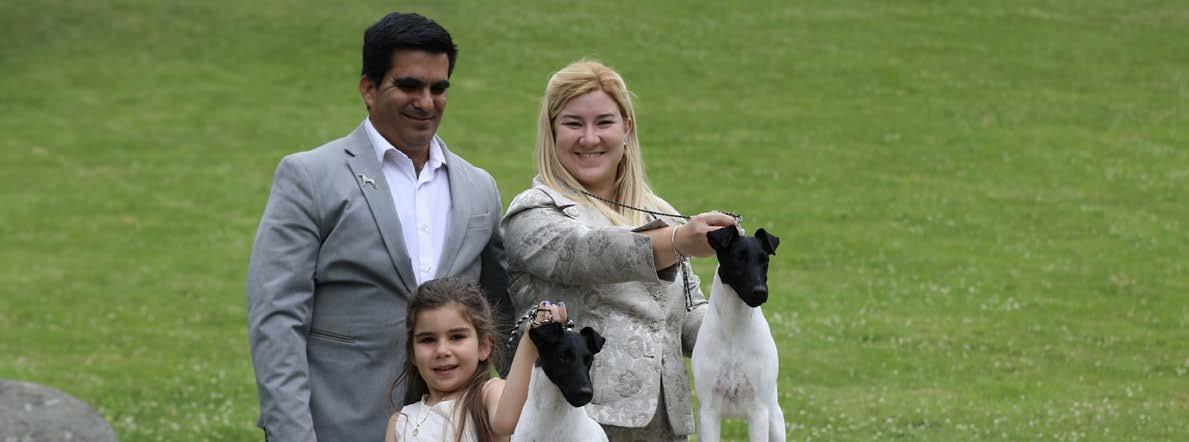


26
48
Palm Springs by K. Price
62
Rosario Pineiro Betancourt
Marilyn Dempsey




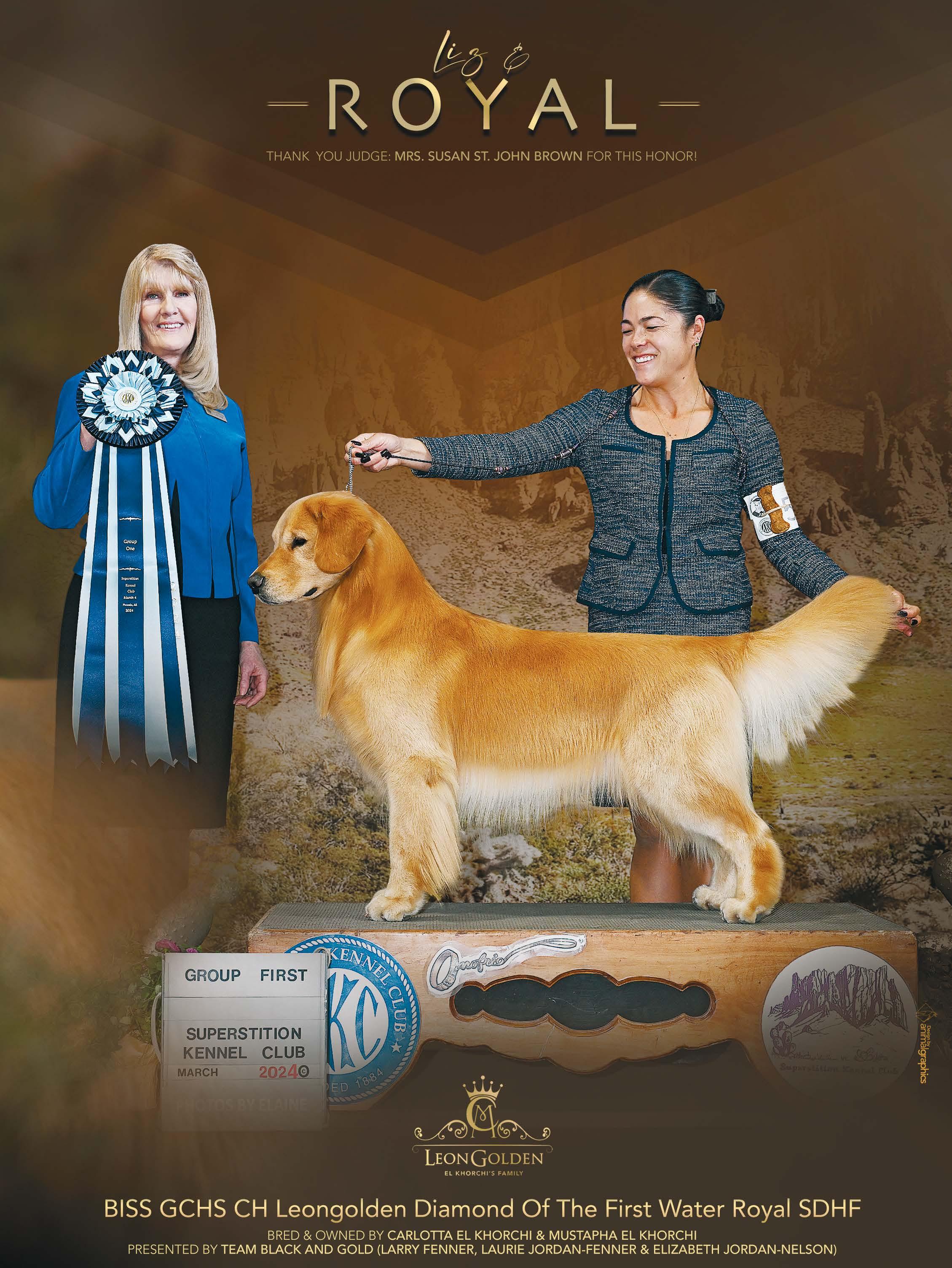


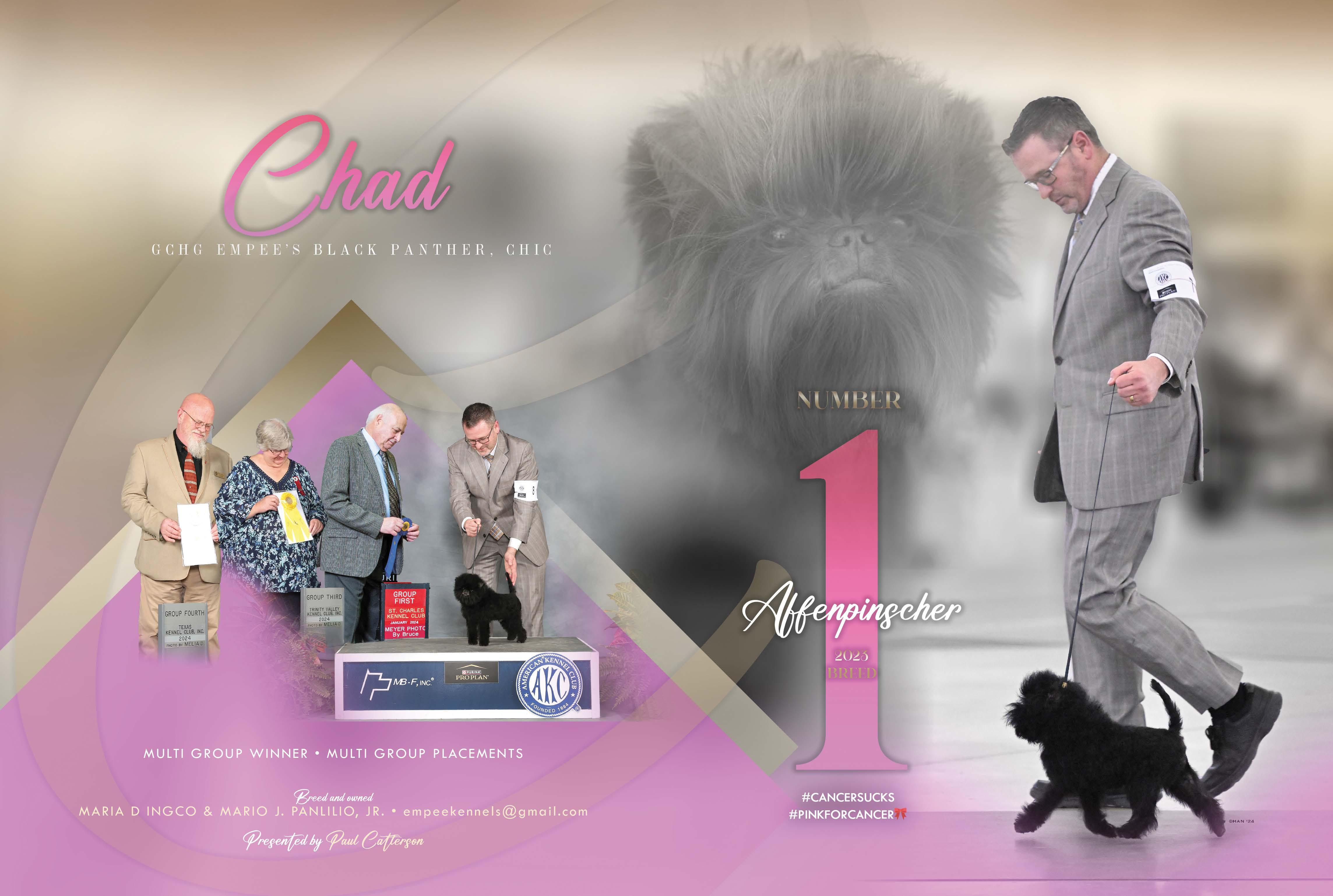



It’s 5 a.m., and the temperature is a few degrees below freezing. Thesunisstillfarfromrising.Katrinahasfinallymanagedtoshed her work clothes and grab a steaming cup of tea, hoping to steal a few precious hours of sleep. The preparations for the upcoming race are in full swing, and Katrina is determined to ensure her team is in the best possible condition through rigorous training, even if it means sacrificing her own rest. As she contemplates her to-do list, which includes readying the sled, laundering the gear, preparing food for the dogs, and not forgetting to nourish herself, Katrina longs for a moment to sit, or maybe even lie down, and attempt to rest, even if just for a couple of precious minutes. Her thoughts are interrupted as Emily enters the room to inform her that there are two eager tourists waiting for their first sled dog experience. ‘Alright,we’llhavetoforgetafewhoursofsleep,’ Katrina acknowledges with determination.


With rosy cheeks and a steaming cup of coffee in hand, she joins Christian and me in the chilly room where we eagerly await our first sled dog adventure. I hang on to every word she says, my eyes wide open, absorbing the details of the sled dogs’ lives. The excitement to meet her team of dogs, now ambassadors to tourists, grows within me, marking the beginning of an unforgettable adventure.
Katrina briefly told us informative things about dog sledding and said that during the ride, she will tell us more about their life and training, and finally asked us, ‘Are you guys ready?’ Of course, we couldn’t wait to get out, see the dogs, and try something we had never tried before. The dogs were already waiting outside in line in front of the sled, barking and being as excited as we were. Their wagging tails seemed so happy to go for a run. Even though I was freezing and couldn’t feel my toes through my winter boots, they were all panting when Katrina said, ‘It’s a bit too hot for themtoday,andthesnowisabitloose,sotheywill use more strength to go through some parts of the trail, and they might get really hot.’
While running alongside them, their happiness was unmistakable. Their barks filled the air, tails waggedvigorously,andtheirpacewasswift,aclear sign of their enjoyment. This joy was contagious, and we found ourselves equally elated. Our journey took us through a snow-covered forest, a vision of winter’s serene beauty. As we emerged, the sight of a lake, its surface encased in ice and snow, greeted us under the early rays of the sun. This scene, etched in my memory, stands as one of
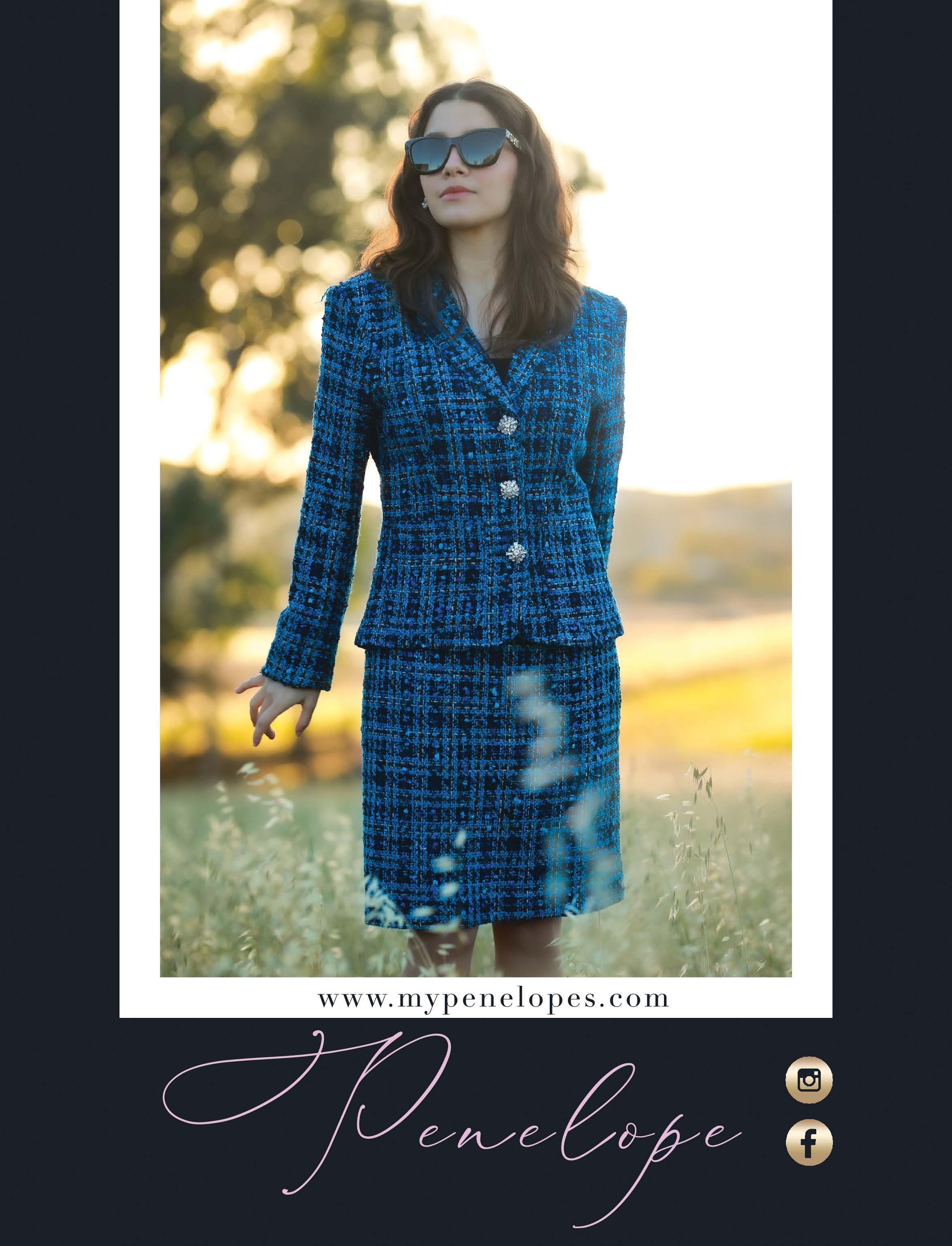
the most breathtaking I’ve ever witnessed.
The trail lasted a mere 30 minutes, yet those momentswereamongthemostfulfillingofmylife.
Upon our return to the starting point, as directed by Katrina, the anticipation had my legs trembling with excitement. The transition from disciplined sled dogs to playful pets was heartwarming. As Katrina removed their harnesses, she invited us to interact with them, revealing a side of these dogs we hadn’t seen. Their lightheartedness, even in those advanced in years, was a testament to their well-being, underscored by tales of their diet and health—remarkably maintained through careful attention to nutrition and a harmonious living environment.
The stark contrast between Katrina’s sled dogs and the show dogs we’re accustomed to couldn’t have been more pronounced. Our exchange about grooming and breeding practices, met with laughter and astonishment, highlighted the differences in our worlds. Yet, it was Katrina’s pragmatic approach to breeding—prioritizing health and ability over aesthetics—that struck a chord. The simplicity and community spirit in their practices, such as the informal meetings to discuss breeding over a beer, offered a refreshing perspective.
After shaking the snow from our boots, we enjoyed one more steaming cup of hot chocolate with Katrina, soaking in the cozy atmosphere. Following this brief moment of warmth and shared stories, we took our leave, giving Katrina the space to rest and prepare for the race that weekend. Our
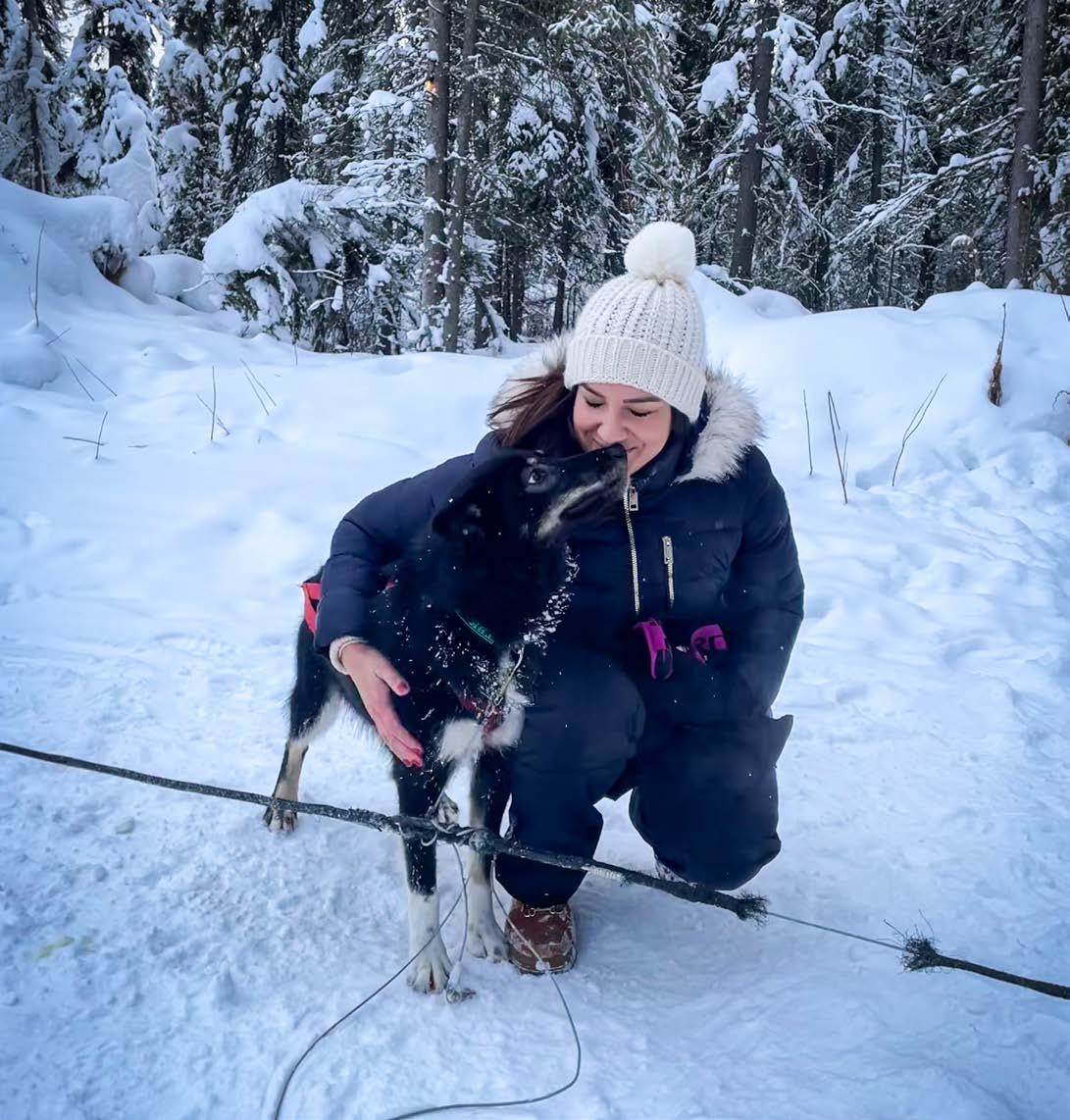
excitement was tinged with admiration, looking forward to seeing Katrina excel in her passion.
On the race day, we arrived early, mindful of the parking challenge and eager to witness the final preparations. Once parked, we armed ourselves with hot vanilla coffees, bundled up in our heavy snowsuits and snowboots, and navigated through towering snowdrifts to reach the frozen river. The area buzzed with activity, pickup trucks and vans scattered around, each team busy prepping their dogs for the year’s first race. After observing the bustling preparations, we planned to catch a glimpse of the race’s start before positioning ourselves further down the river, hoping to see the dogs and mushers in their element, racing at full speed. The sight was nothing short of spectacular!


Catching sight of Katrina’s joyful expression, we offered our best wishes for luck and a safe return.
Unfortunately, we were unable to stay for the duration of the race, given its lengthy span of 9 to 14 days, making it one of the most grueling competitions in the world. The 2023 Yukon Quest was won by Michelle Phillips, leading her valiant team of 12 dogs to victory. The prize of $8,850 she received, while significant, only partially covered the extensive costs of preparing her team for such an arduous challenge.
Katrina, on the other hand, did not secure a win. However, she openly acknowledged prior to the start that her regular job had limited the time available for training her team. Despite this, her commitment to the race was unwavering. She aimed not for victory but to cross the finish line, a testament to her dedication and the enduring spirit of the mushers and their teams in facing one of the toughest races on earth.
The Yukon Quest is a highly challenging longdistance sled dog race that spans approximately 1,000 miles (1,609 kilometers) between Fairbanks, Alaska, and Whitehorse, Yukon. Conceived in 1984, the race was designed to be more than a competition; it’s a tribute to the historical significance of the Yukon River and the winter routes used during the Klondike Gold Rush and by early mail and supply carriers.
Taking place annually in February, a month chosen for its harsh winter conditions, the Yukon Quest tests the endurance, skill, and teamwork of bothmushersandtheirdogteamsastheynavigate rugged terrain, extreme temperatures that can drop below -50°C (-58°F), and unpredictable weather. The trail winds through some of the most remote and breathtaking landscapes in North America, including steep mountain passes, frozen rivers, dense forests, and isolated northern communities.
Mushers must be self-sufficient, carrying their food, supplies, and dog care items, relying on their skills in wilderness survival, navigation, and dog care. Checkpoints along the route offer some respite, allowing for rest and veterinary checks to ensure the health and welfare of the dogs, which is of paramount importance throughout the race.
The Yukon Quest is not just a test of physical endurance but of mental toughness, strategy, and the deep bond between musher and sled dogs. It stands as a testament to the spirit of adventure, the love of the northern wilderness, and the incredible capabilities of sled dogs, embodying the heart of northern winter traditions.
The history of sled dogs is a fascinating tale that spans thousands of years, tracing back to the indigenous cultures of the Arctic and subArctic regions of Siberia, North America, and Greenland. These dogs were not only essential for transportation across the frozen, inhospitable landscapes but also played vital roles in the survival of the people they served.
Theuseofsleddogsisbelievedtohaveoriginatedat least 4,000 years ago, though some archaeological evidence suggests that dogs may have been used for pulling sleds as far back as 9,000 years ago. Initially, these dogs were bred by indigenous peoples for their strength, endurance, and ability to withstand harsh winter conditions. They were used for a variety of purposes, including hunting,
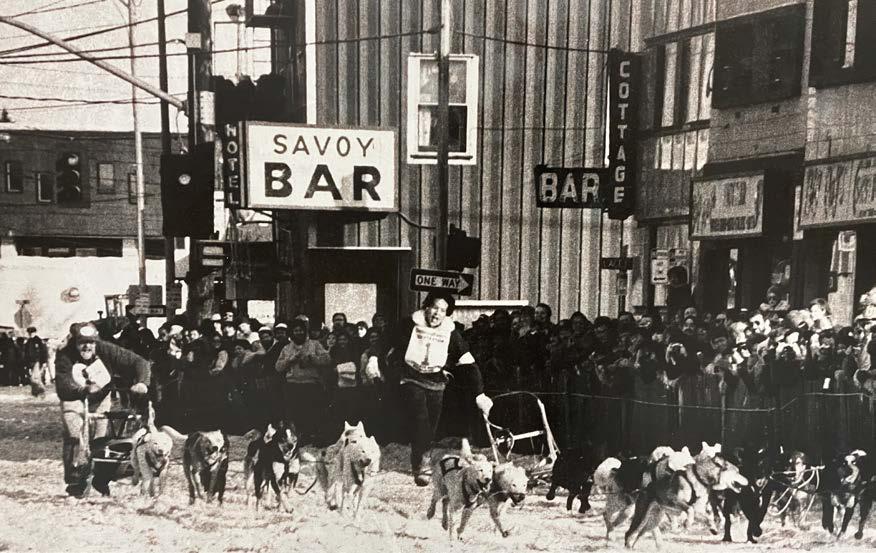


transporting goods, and moving between camps and villages.
Several breeds of dogs have been historically used as sled dogs, the most well-known being the Siberian Husky, Alaskan Malamute, Samoyed, and
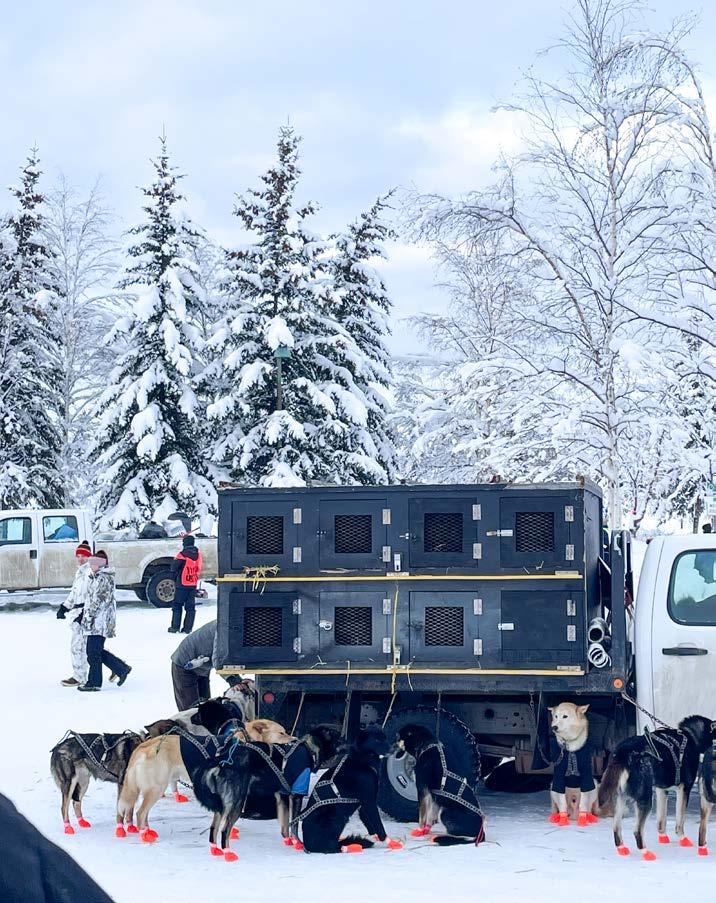
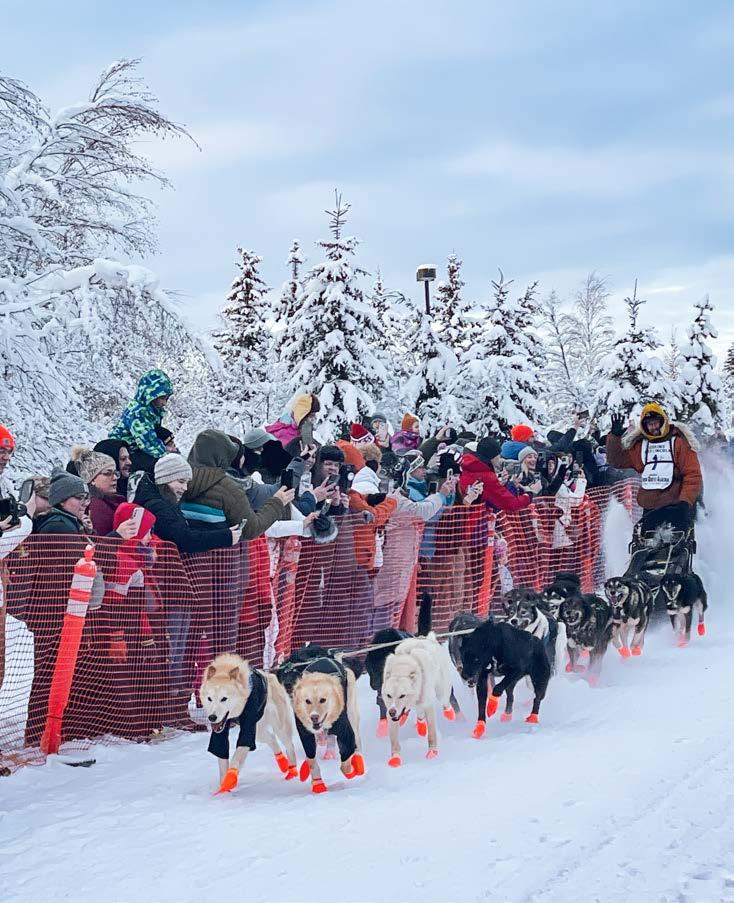
the Alaskan Husky—a not officially recognized breed that’s specifically bred for its sled-pulling capabilities. These dogs are characterized by their thick fur coats, which protect them against extreme cold, their strong, muscular builds, and their exceptional stamina and resilience.
Sleddogsplayedacrucialroleintheexplorationof theArcticandAntarcticregions.Famousexplorers like Roald Amundsen, Robert Falcon Scott, and Ernest Shackleton relied on sled dogs for their expeditions. In the early 20th century, sled dogs were instrumental in delivering mail to remote communities in Alaska and Canada, a practice that continued until the advent of snowmobiles and airplanes.
The resurgence of interest in sled dogs in the 20th century led to sled dog racing becoming a popular sport. The most famous sled dog race, the Iditarod TrailSledDogRace,commemoratesthe1925serum run to Nome, where sled dogs were used to deliver diphtheria antitoxin to combat an outbreak. This

event is celebrated through the Iditarod, which covers over 1,000 miles from Anchorage to Nome, Alaska, and showcases the endurance of sled dogs and the mushing skills of their handlers.
Sled dogs hold a significant place in the culture and historyoftheArcticpeoples.Theyarecelebratedin stories, songs, and ceremonies, highlighting their role not just as animals of labor but as companions and family members. Today, sled dogs continue to be used for recreational purposes, in competitive racing, and in some remote areas, for practical transportation.
The history of sled dogs is a testament to the deep bond between humans and dogs, showcasing their remarkable abilities and the crucial role they have played in human survival and exploration in some of the world’s most challenging environments.
If you’re in the mood for an adventure that takes you off the beaten path and into experiences that feel like they’re from another world, Alaska in the depths of winter is where you should be heading. My journey to this breathtakingly beautiful state was nothing short of magical, offering a blend of adrenaline-pumping activities, serene beauty, and the awe-inspiring spectacle of the Aurora Borealis.
Our adventure began in February, a time when Alaska’s rugged landscape is blanketed in snow, and the temperatures dip well below freezing. It’s a period of calm, with fewer tourists around, allowing for a more intimate experience of the state’s vast wilderness. From Ontario, we flew over Seattle, landing in Fairbanks, the gateway to our Alaskan escapade.
Upon arrival, we embarked on an hour-long drive through snow-covered roads to our cozy cabin nestled in the woods. The serenity of our surroundings was palpable, and after settling in, we couldn’t resist the call of the wild. Dressed in our snowsuits and special snowboots equipped with paragonbindings,weventuredoutforawalkunder the star-studded Alaskan sky. The quiet, coupled
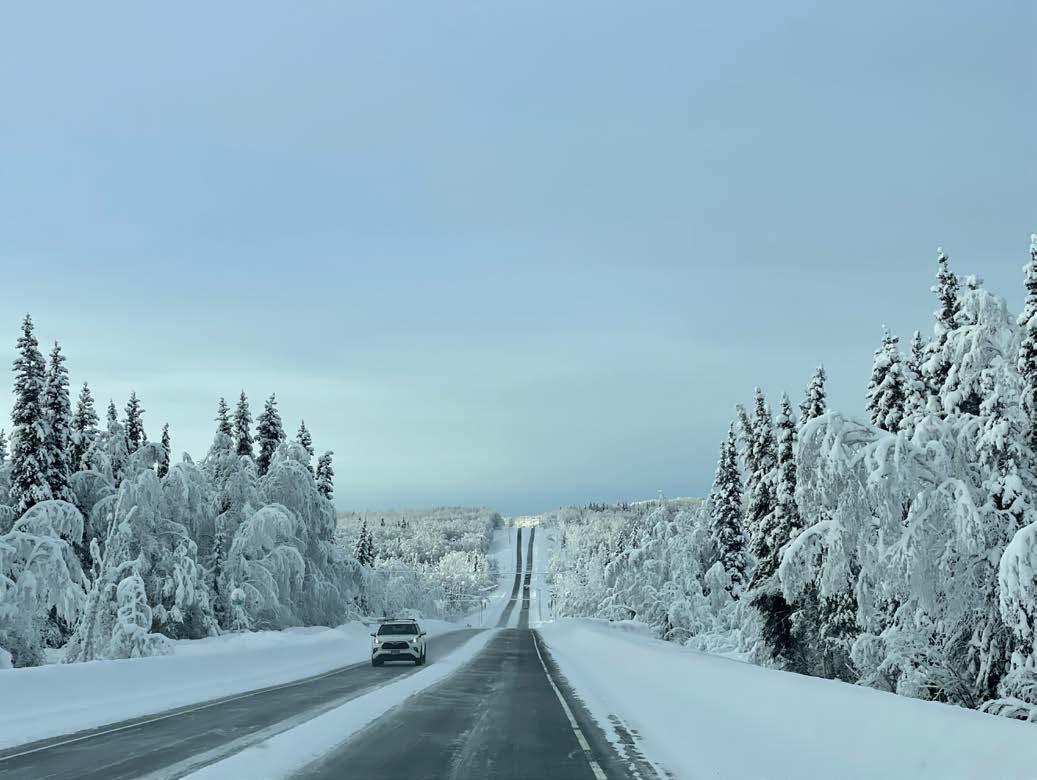
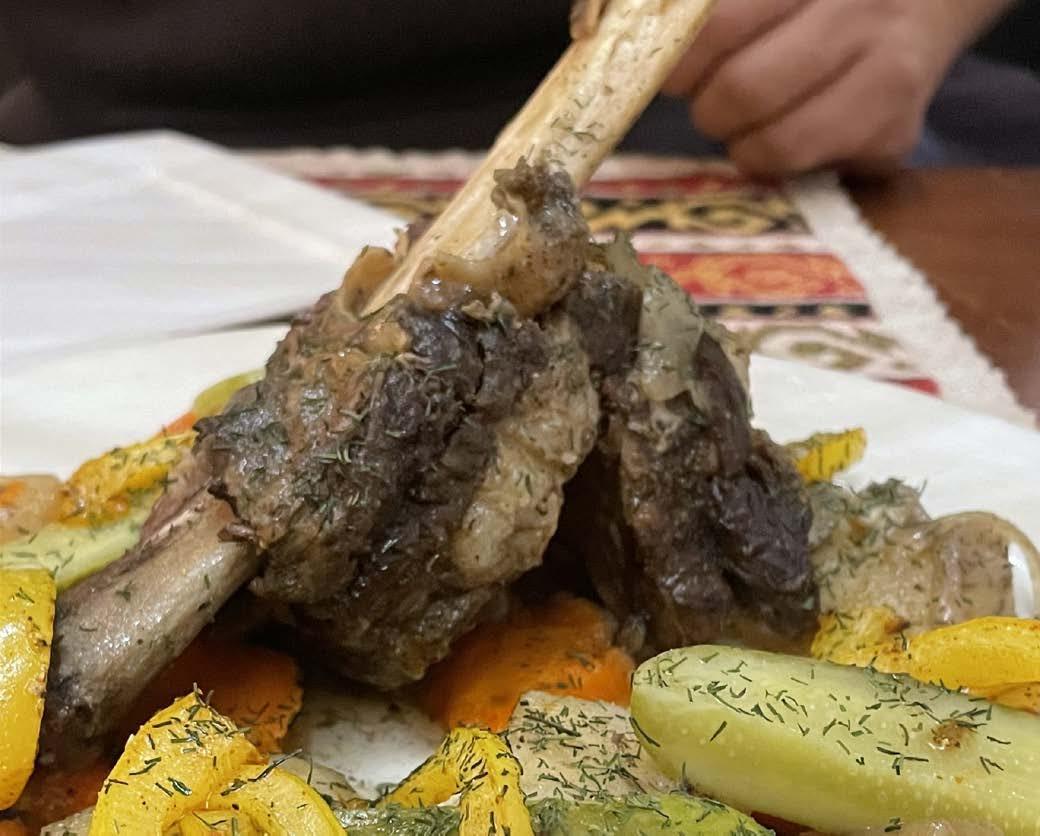


with the vast expanse of snow and the clear night, was spellbinding.
The highlight of our stay in the woods was, without a doubt, the dog sled ride. Gliding through the snow, led by a team of enthusiastic sled dogs, was exhilarating. But the adventure didn’t stop there. We also experienced the thrill of driving snowmobiles across frozen lakes and through dense forests. Racing at full speed across the icy landscape, with adrenaline coursing through our veins, was unforgettable. Despite being bundled up in heavy snowsuits, the chill eventually seeped in, making the hot chocolate that awaited us at the end of the day even more satisfying.
Another remarkable experience was our visit to ChenaHotSprings.Justashortdrivefromourcabin, this resort offered an unparalleled opportunity to sip martinis from glasses made of ice in their ice museum and then swim in the natural hot springs amidst falling snow. The contrast of the hot water against the cold air was invigorating, creating a sensation I’ll never forget—though I’ve learned my lesson about mixing hot springs and alcohol! But perhaps the most anticipated part of our Alaskan journey was the chance to witness the Aurora Borealis. After relocating to Fairbanks for better viewing opportunities, we spent our nights away from the city lights, eagerly awaiting the spectacle. Despite the cloud cover threatening our chances, persistence paid off. Around 3 a.m., as we were close to giving up, the skies cleared, and the aurora appeared. The dance of green lights across the night sky was mesmerizing, a fitting climax to our Alaskan adventure.

Our trip to Alaska was more than just a vacation; it was a journey into the heart of winter’s majesty, filled with moments of awe, adrenaline, and the serene beauty of the natural world. From the thrill of dog sledding and snowmobiling to the
peacefulness of walking under the stars and the magic of the northern lights, Alaska offered an unparalleled adventure that I’ll cherish forever.


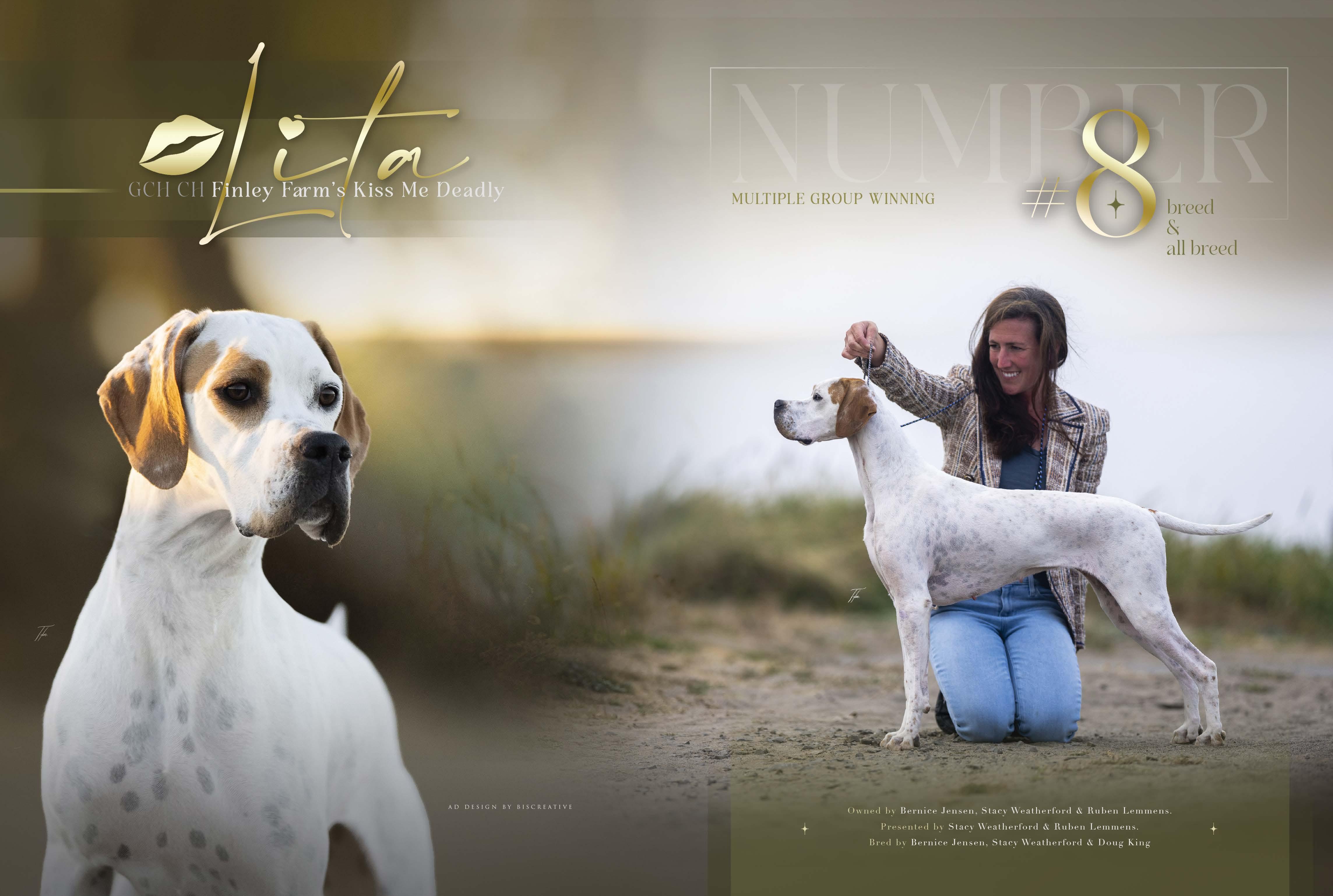







 by Kaitlyn Price
by Kaitlyn Price
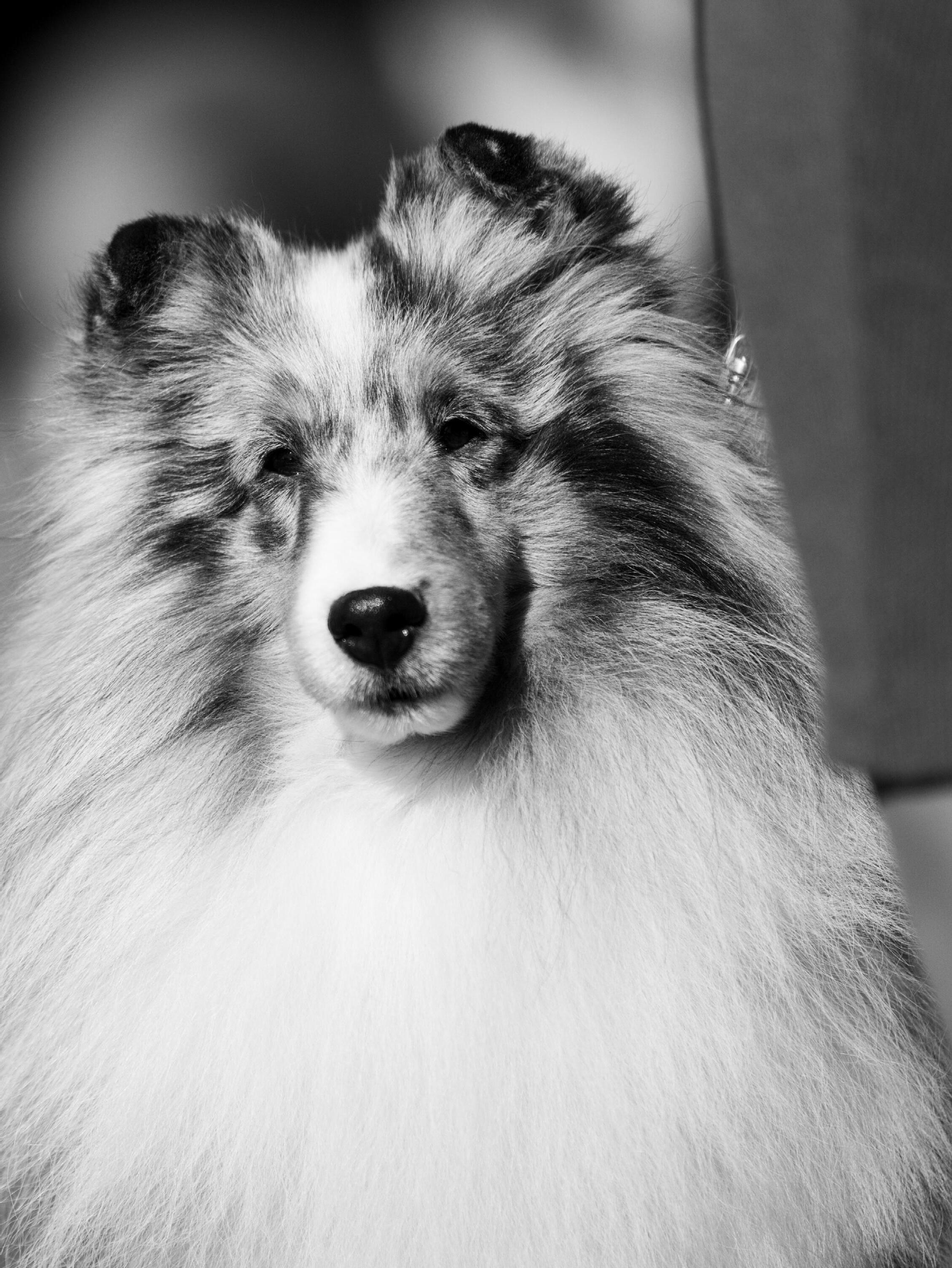
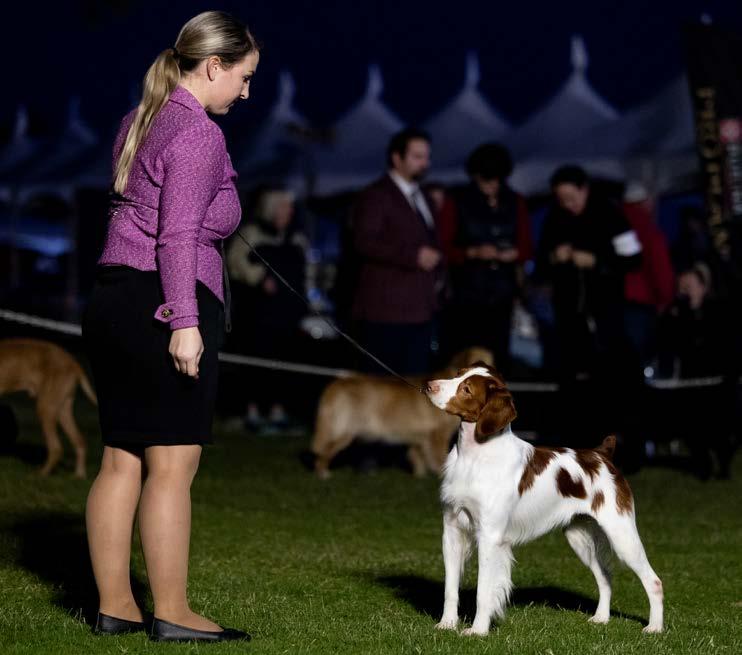
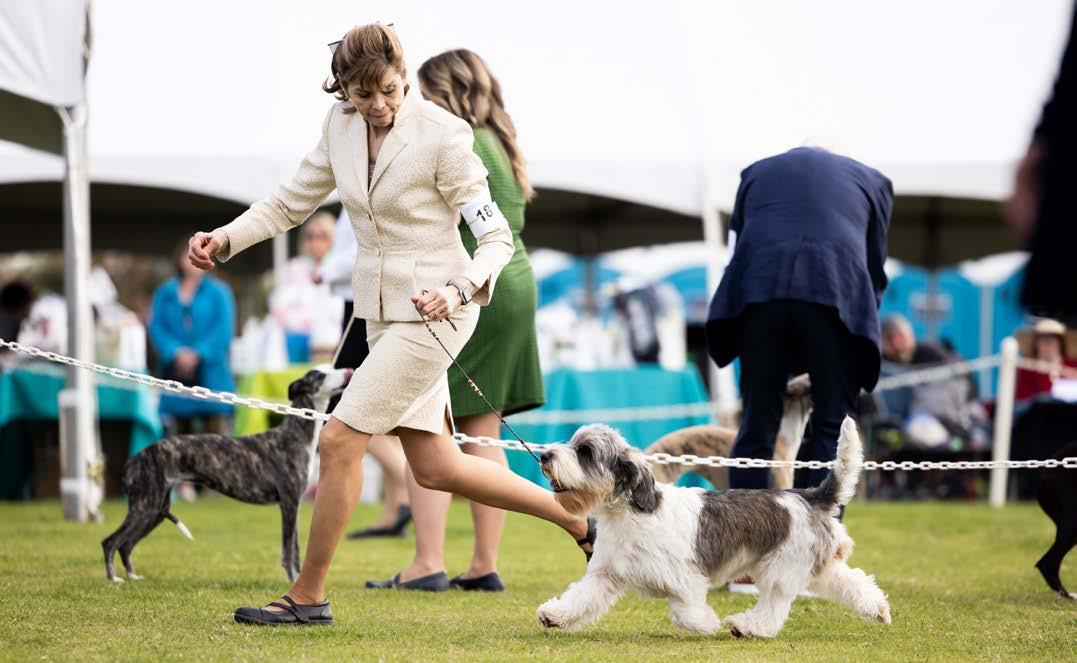




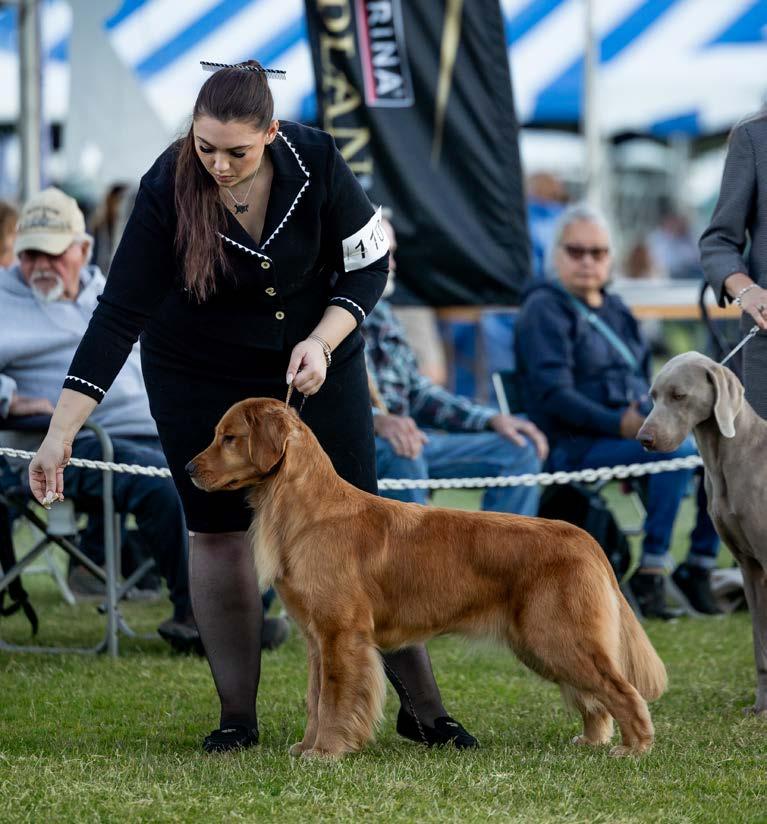



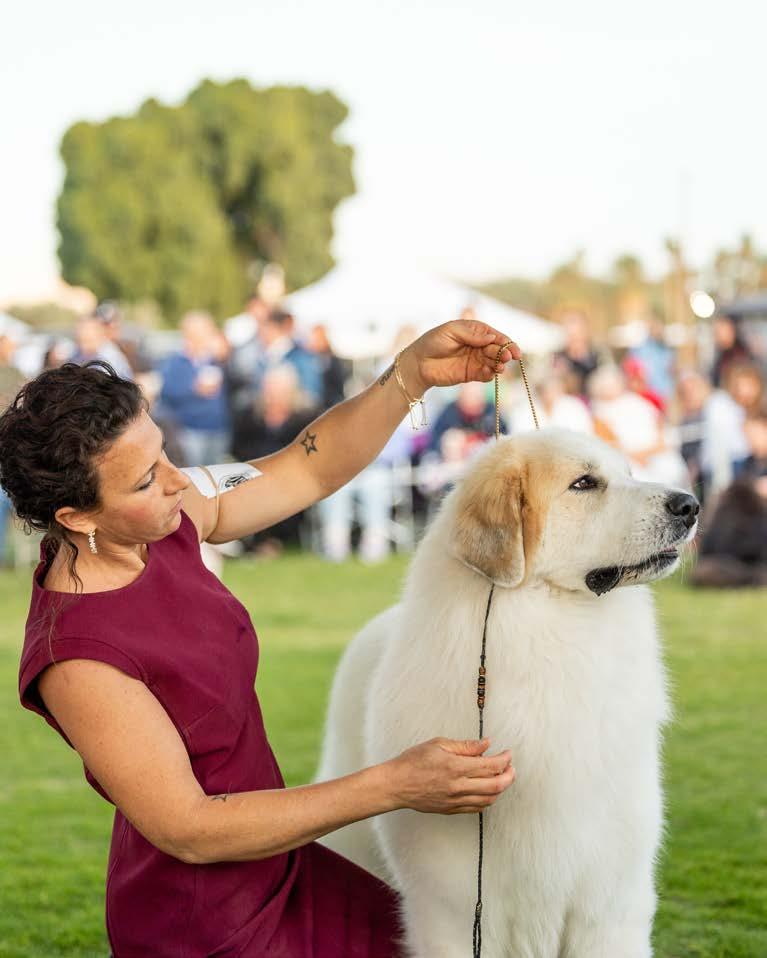
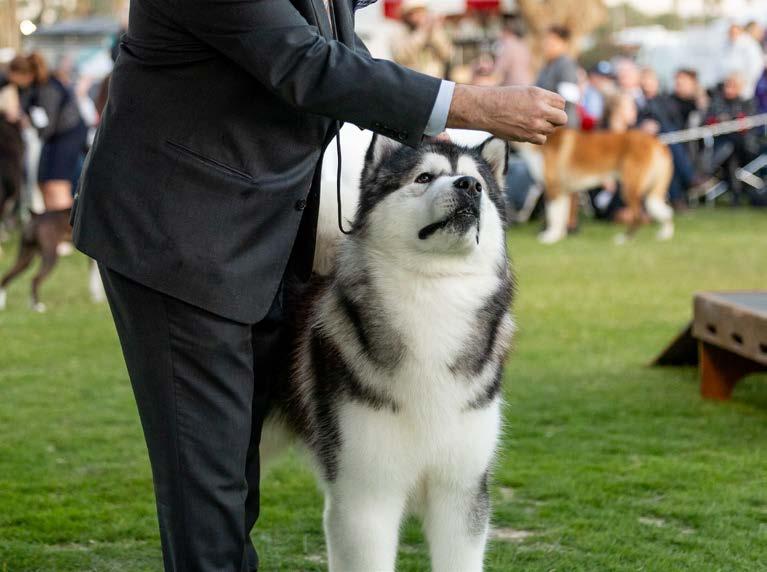


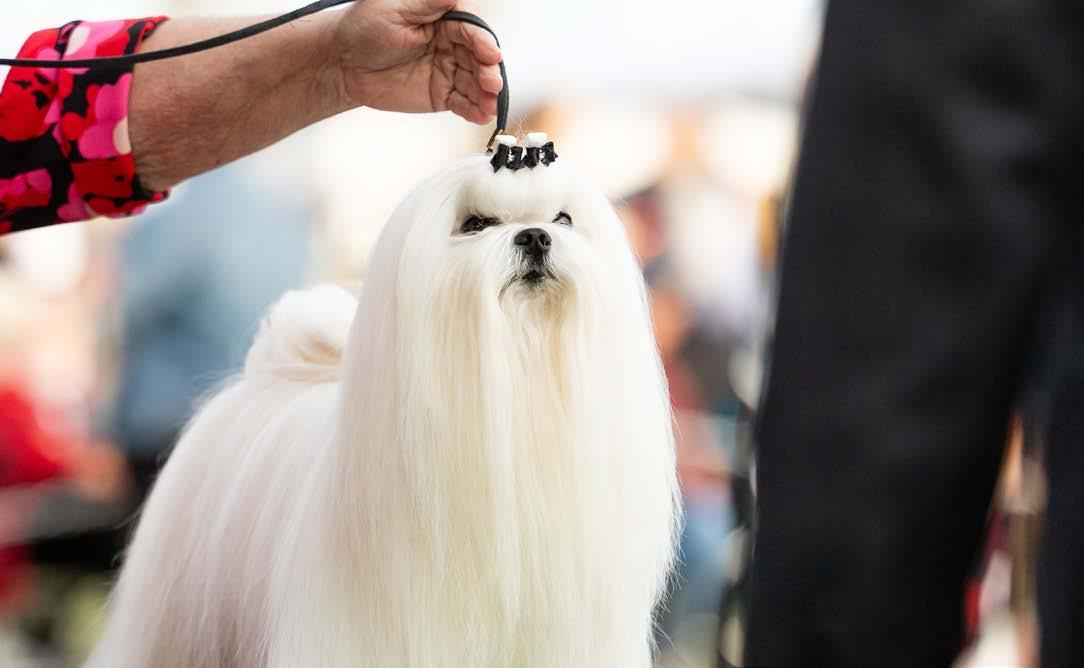



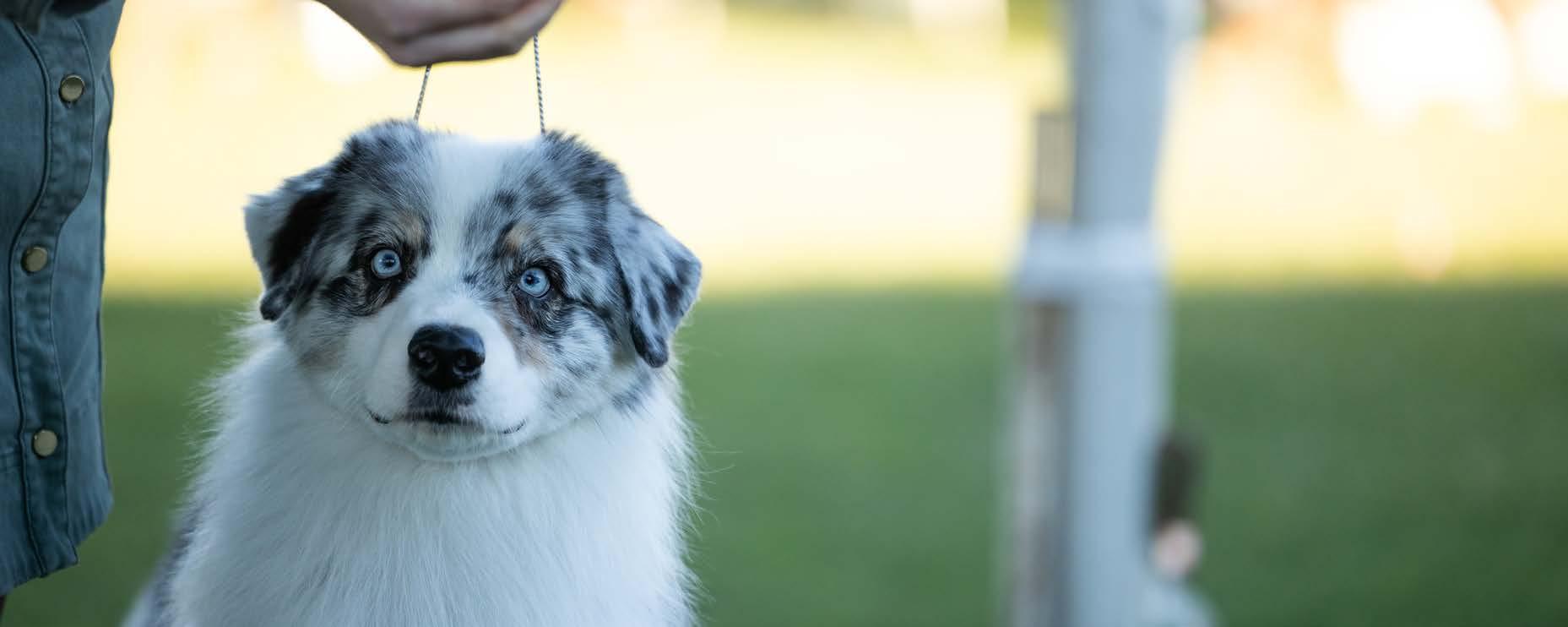
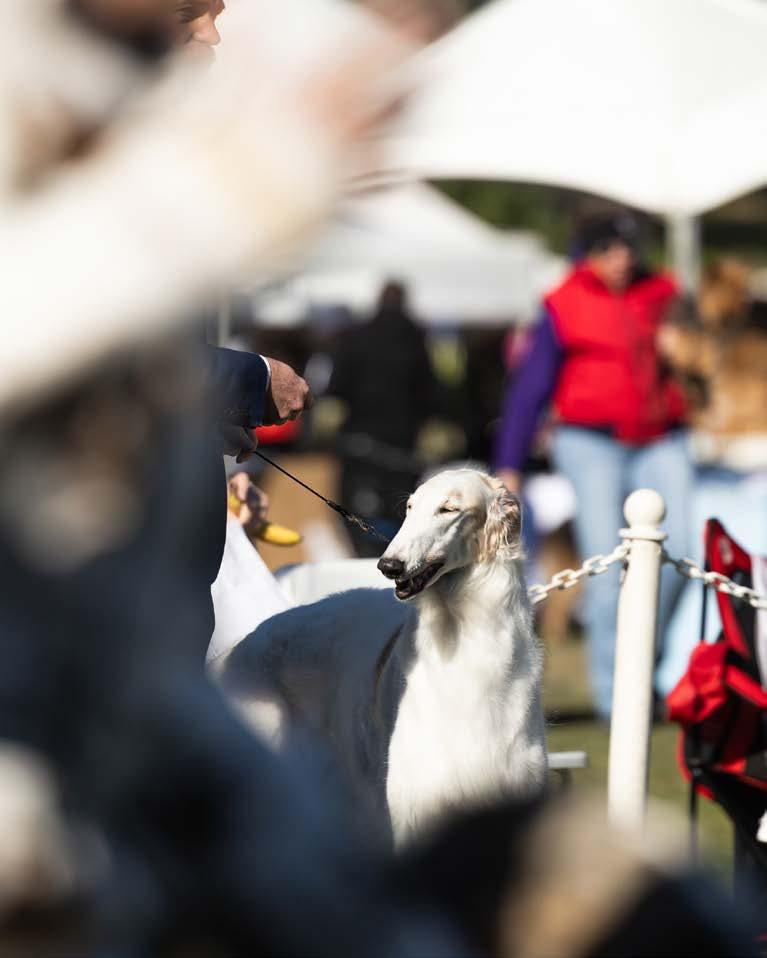
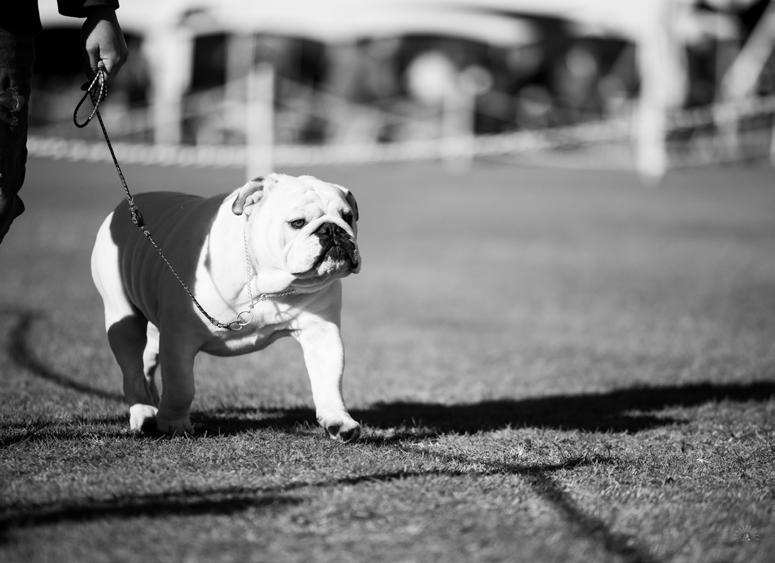



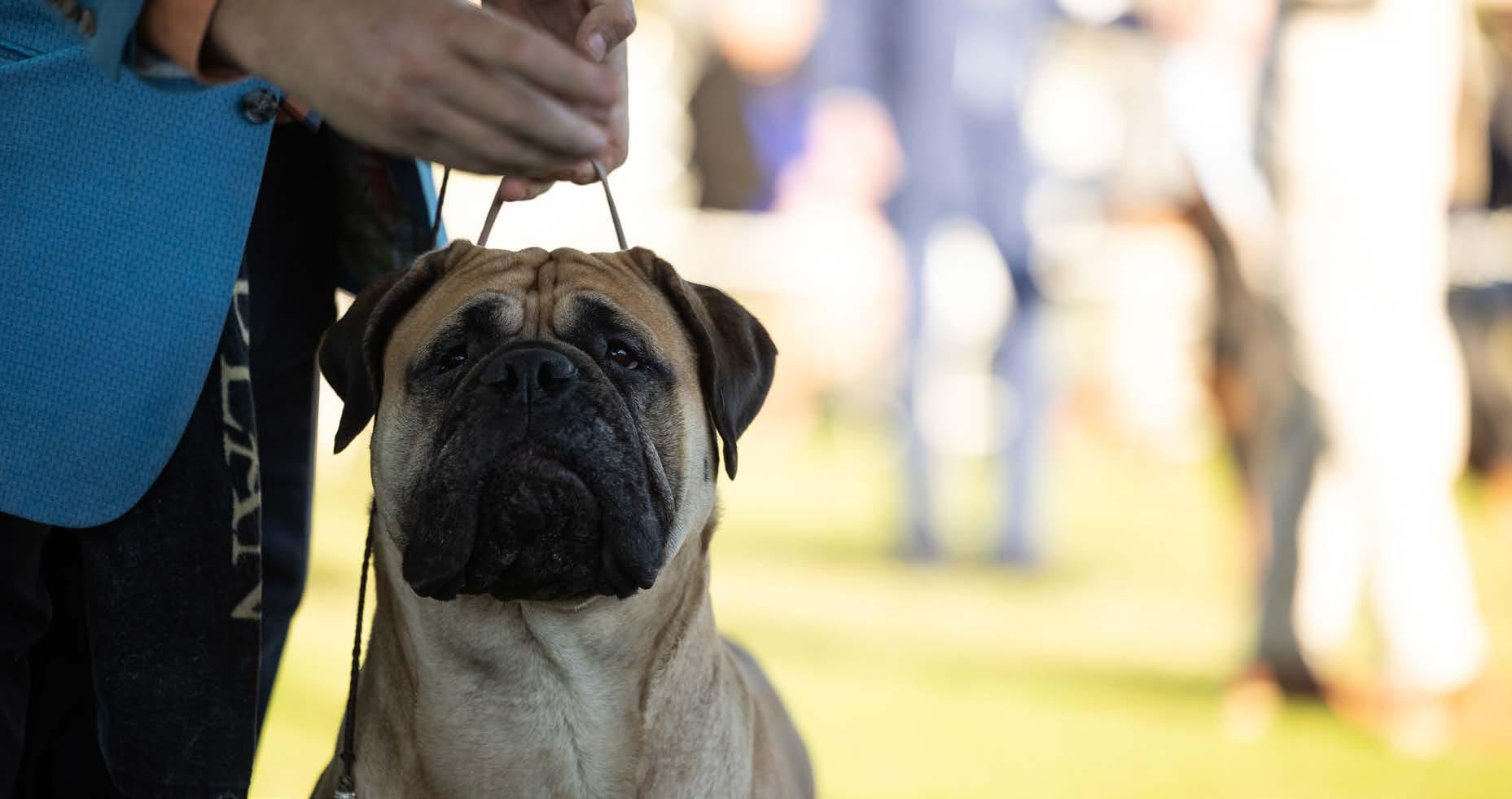







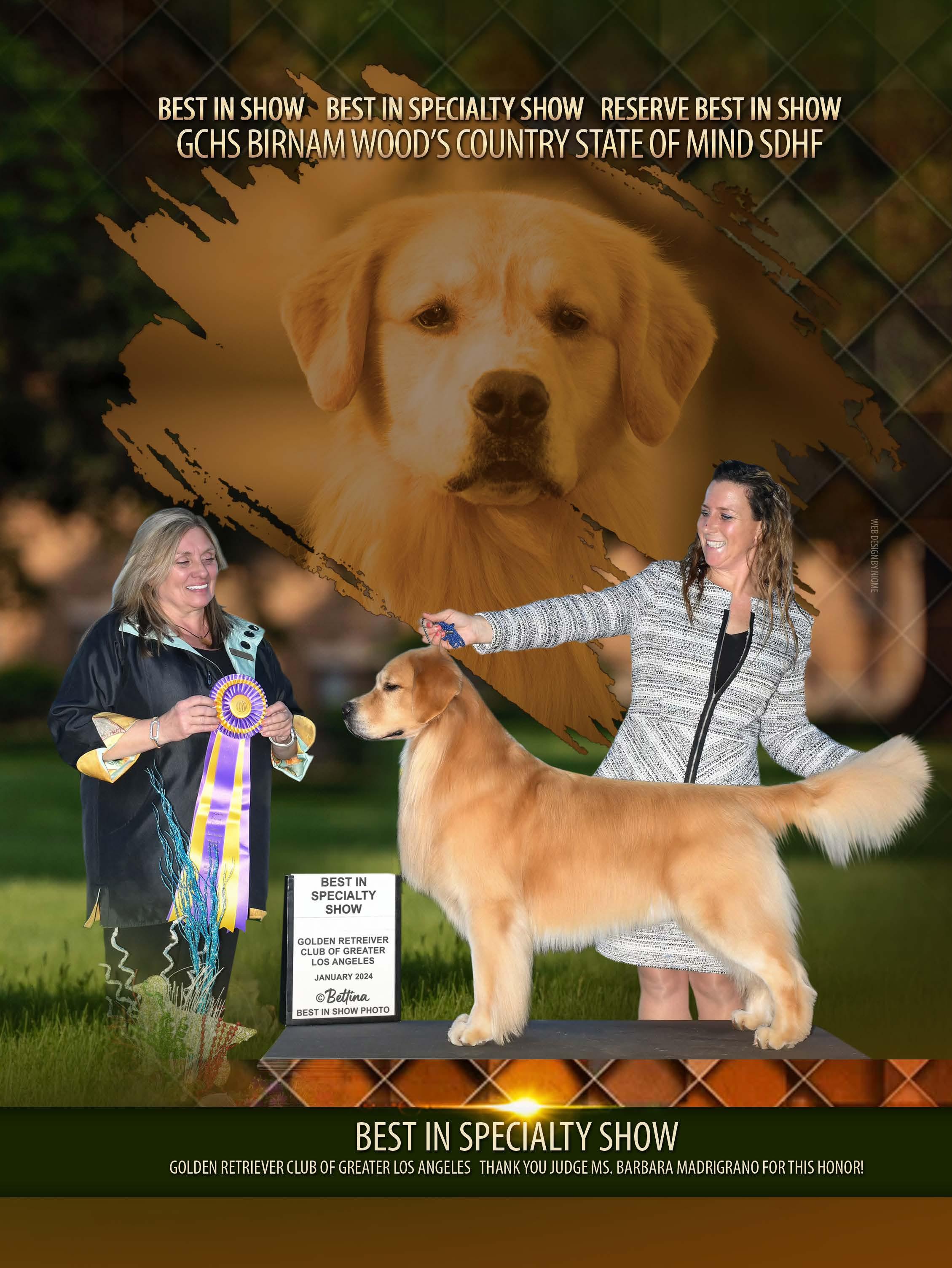
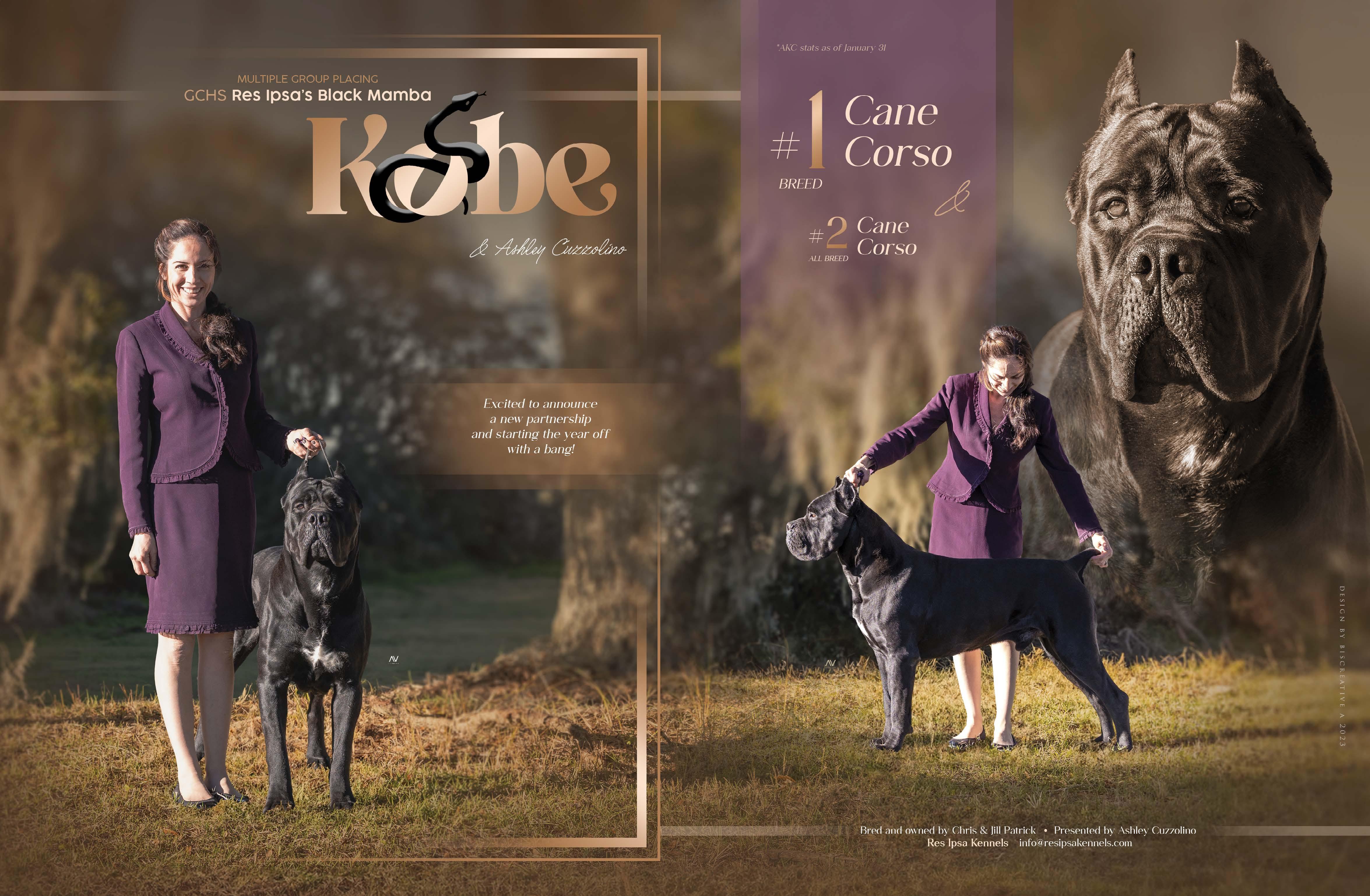
 FROM THE OWNER HANDLED LEASH
FROM THE OWNER HANDLED LEASH
Please tell our readers how you became involved in the world of pedigree dogs and who were the most influential people in your early days.
I grew up with Great Danes. My mother, Maria Adela Barbadori, began showing and breeding Danes in 1995 when we moved to Brazil. A friend, Anna Maria Dona, who breeds Dobermans and Pugs, introduced us to the world of dog shows. After attending our first dog show, our entire family became involved in showing dogs as a hobby. This included my siblings, my brother Nicolas and my sister Angeles.
I started showing some of my mother’s Danes when I was 8 years old and also competed in junior showmanship for a couple of years. However, I always enjoyed more showing in the regular ring against professionals. I learned a lot from my mother about studying pedigrees, selecting breedings, and combining different lines. She is my greatest mentor.

Eventually, I wanted to have my own breed, so I started with Pugs. I bred a couple of champions and did very well with them. I also had some Afghan Hounds for a few years. But then, I met a lovely Smooth Fox Terrier, shown by Marcelo Chagas and Marcelo Veras, who also showed some of my mother’s Danes. His name was Sportingfields Gatsby, and I fell in love with the breed.
I decided that I definitely wanted a Smooth Fox Terrier in my life, but it had to be a good one that I could start a breeding program with. I bought my first SFT, Arg. Ch.Br.Ch.Int.Ch. Cosmo De Clavo Y Canela, in 2007. He was my foundation dog and a grand-grandson of Sportingfields Gatsby. “Cosmo” was a very special dog and a great producer. My first litter, under the name Blaue King, was born in 2009. After that year, I changed my kennel name to Cheltenham.
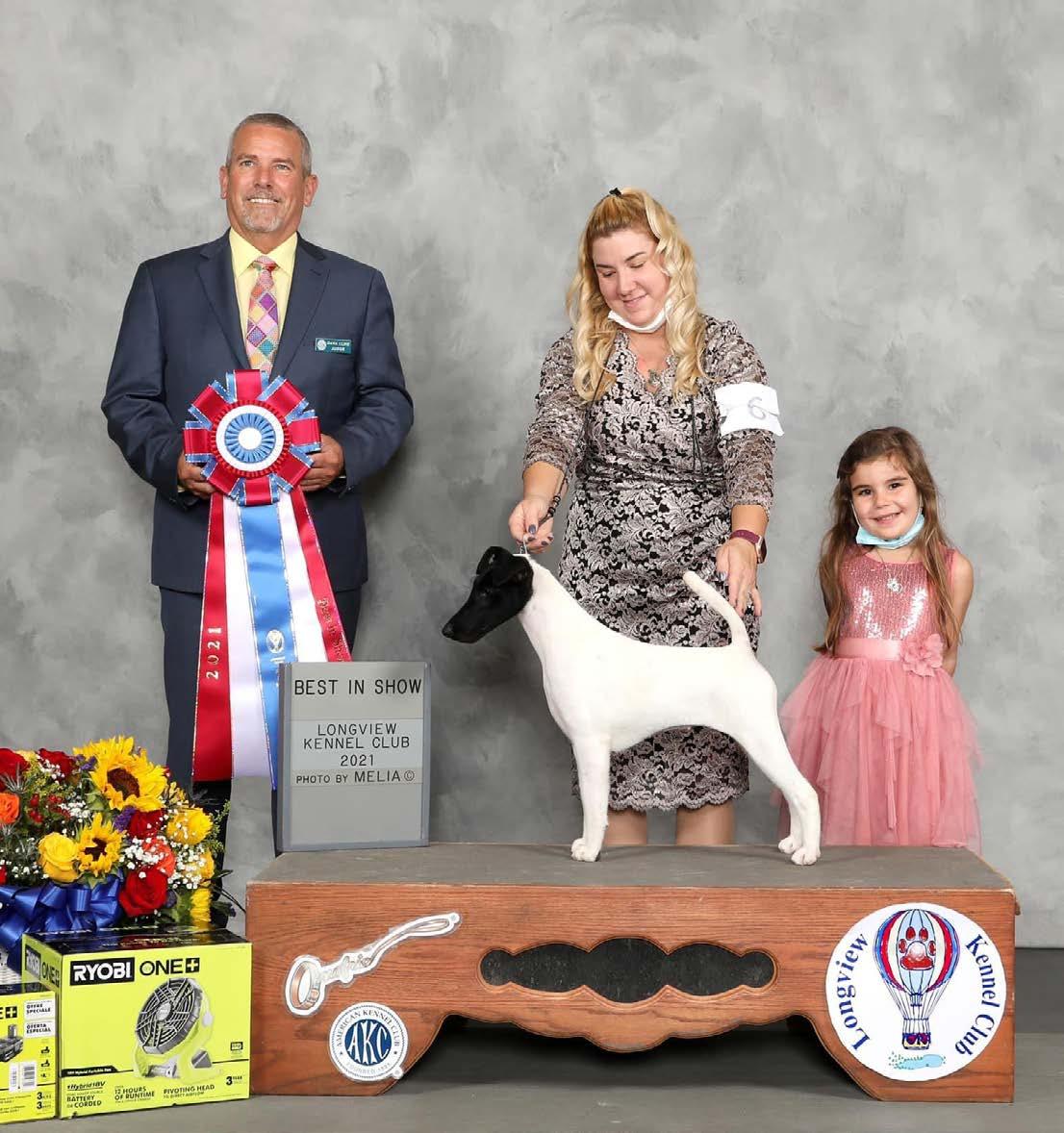
What breeds of dogs have you shown over the years, and which are your favorites to work with?
I’ve shown Great Danes, Doberman Pinschers, Cane Corsos, Rottweilers, Standard Schnauzers, Bullmastiffs, Boxers, English Bulldogs, French Bulldogs, Boston Terriers, Shih Tzus, Pugs, Yorkshire Terriers, English Pointers, English Springer Spaniels, English Cocker Spaniels, American Cocker Spaniels, Golden Retrievers, Labrador Retrievers, Afghan Hounds, Whippets, Salukis, Basenjis, Beagles, Greyhounds, Smooth Fox Terriers, WireFoxTerriers,MiniatureSchnauzers,CairnTerriers, Kerry Blue Terriers, Scottish Terriers, and Standard Smooth & Wire Haired Dachshunds.
My favorites are the Terriers; they have the best personality and learn very quickly. I love working with them. I also like Afghan Hounds because they pose a challenge, and I enjoy that. The ones I showed were tough, and they wouldn’t perform for just anyone.
Where did you acquire your foundation dogs for your main breeds, and which breeders in the sport do you collaborate with today?
My foundation dog in Smooth Fox Terriers (SFT) came from Clavo Y Canela, bred by Ricardo Goya and Daniel Levinson in Argentina. My foundation female was from Torquay SFT, bred by Marco Flavio Botello in Brazil. I also bred some of my females with a Quissex dog from Winifred Stout, a Lil’Itch dog from Suzann Hoesman and Madeline A Peterson, and a Centary from Marcial Mike Rafanan.IimportedadogfromFrancefromWryN’Wise, bred by Sophie Venard, and more recently, a female from Denmark’s Kajsenborg, bred by Tenna S Grenaae. I’m very grateful to all these breeders for allowing me to incorporate their lines into my breeding program.
Could you mention some of your most successful dogs, whether owned or bred by you? They don’t have to be shown by you.
My most successful dog is Multi BIS, RBIS, GCHS Cheltenham A Star Is Born (Daisy). She was the Top Best In Show winner SFT in 2021, also ranking as Number 1 SFT All Breed that year until November and Top 20 Terrier. I also have to mention two of my other successful females, Multi BIS, BISS, RBIS GCHG
Cheltenham Love In Paris (Lina), who was Number 2 SFT Breed in 2019, winning Best Of Opposite at Montgomery that year and at Westminster in 2020. Another is Multi BIS, BISS, RBIS GCHS Cheltenham
Harewood Tainted Apple (Wicked), who was Number 2 SFT All Breed in 2019, earning 2xSelect at Westminster and AWOM at Montgomery that year. These three females are closely related. Another dog that makes me proud is Ch. Cheltenham The Leader Of Justice (Dasher), who has so far produced fantastic litters as a stud.
Please share some of your highlights in the show ring so far.
Some of my highlights include winning 15 Best in Shows All Breed, a couple of Best In Specialty wins with three different dogs, and securing Winners Dog and Best Of Winners at our National in Kentucky last year with our home-bred SFT. Additionally, I’ve achieved great group winnings and placements with some client’s dogs.
What excites you more – winning an All Breed Best in Show or a Specialty Best in Show?
I’d say both! Winning an All Breed Best In Show is

amazing. I will never forget my first BIS, which was in a beautiful lineup of top dogs in the country. Each win was very special, and I cried with happiness with each one because they were with our homebred dogs, and there’s always a lot of emotions involved.
Overall, do you think there are too many all-rounder judges judging your breed and not enough breed or group specialists?
Yes, there are too many all-rounder judges for my breed. I would prefer to see more breed or group specialists in judging roles.
Westminster or Orlando? Also, how do you feel about Westminster not being held at the Garden anymore?
Westminster is definitely my favorite show.
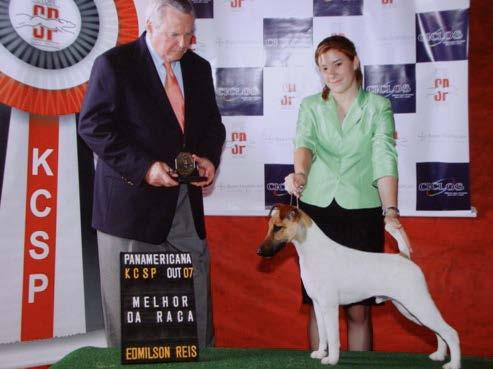
Where in the world do you think your breed has the best quality?
I believe the United States has the best quality for my breed.
Many shows in Europe feature a breeds class/stakes where breeders compete with a team of dogs they’ve bred. Would you like to see this class introduced at general championship shows in the USA?
A: It would be very nice to have this class at shows here in the USA. I would love to participate in it.
What are your thoughts on the number of dog shows held weekly across the country?
There are too many shows, which can make it difficult to achieve majors due to lower entries in some events.
Do you judge, and if not, would you like to judge someday?
I don’t judge currently, but I would definitely like to in the future.
What is your favorite way to unwind on your days off? Do you have hobbies outside of the dog world?
I love spending time at home with my family. Gardening and cooking are my favorite hobbies outside of the dog world.
If you had the power to change dog showing for the better, what would you change?
I would like to see breeders, owners, exhibitors, and handlers come together to discuss breed standards and pedigrees, to improve the quality of dogs in the ring.
Has anything recently moved you?
Watching my daughter and other kids showing dogs has been very moving. It’s heartening to know they are the future of the sport.


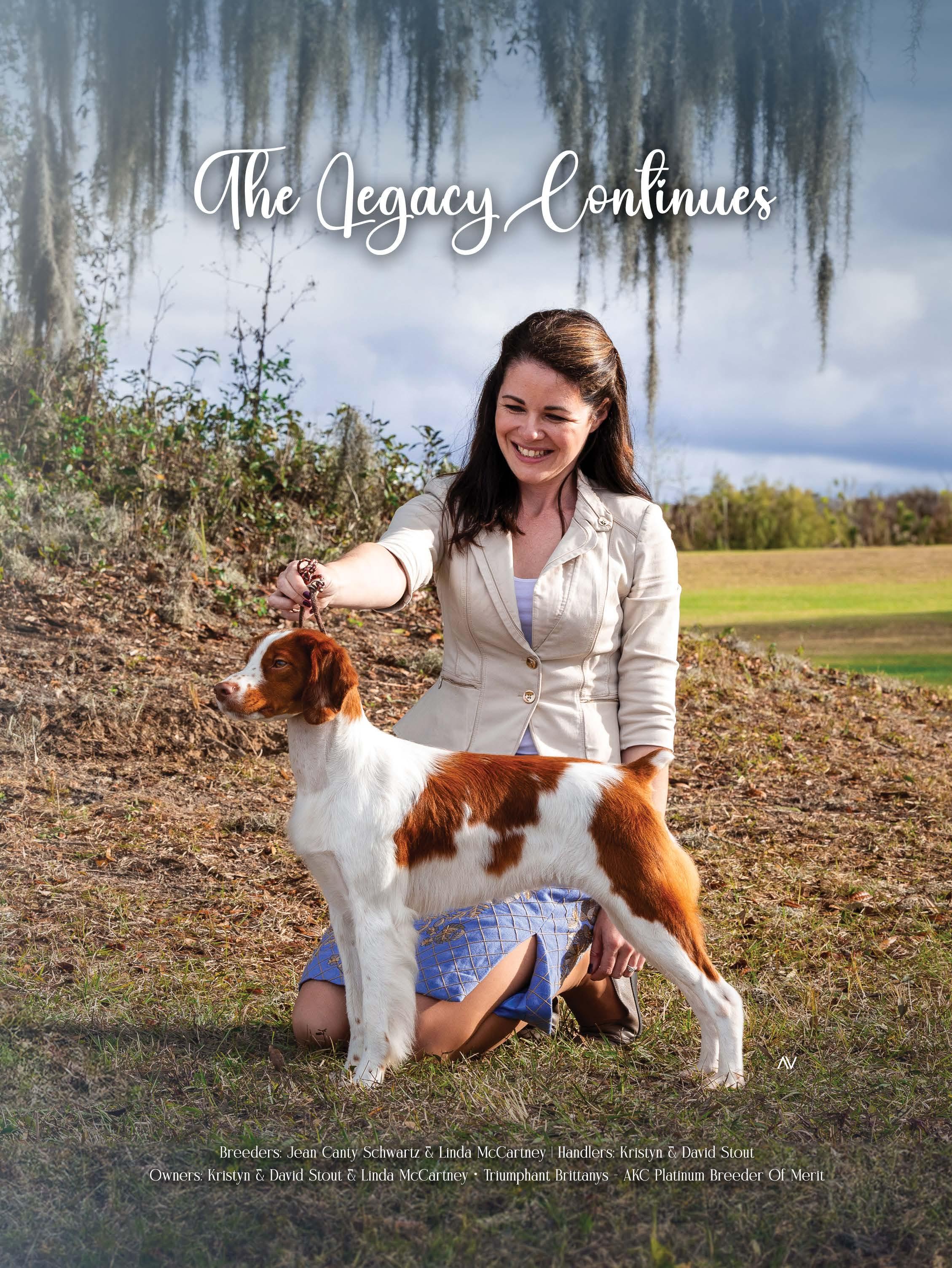


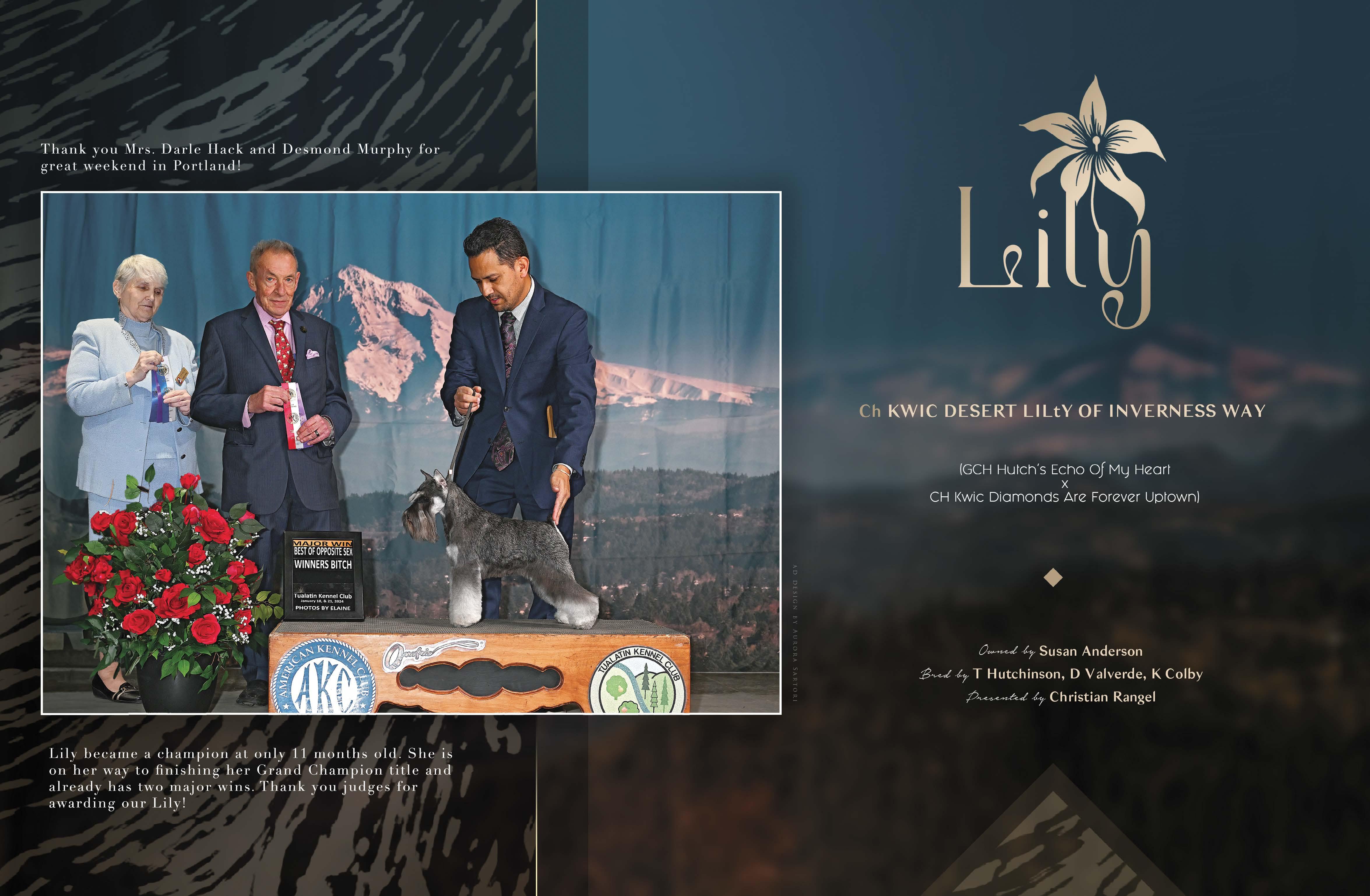


Please tell our readers how you got involved in the world of dogs and dog showing.
I didn’t grow up in a dog show family. My first encounter with the dog show world was through Cara Ryckman of Terlingua Chihuahuas. We had already known Cara outside of the dog scene because I used to compete in pageants with her daughters. In 2017, I decided that I needed another
hobby besides competitive cheerleading due to the stress of the competition season. She sold us our first show dog, Sriracha, enabling me to start showing in Junior Showmanship and conformation. Sriracha, a sweet, long-coat Chihuahua, helped me qualify for both AKC Nationals and Westminster within my first year of showing. Cara assisted me in finishing Sriracha and later sold me my current juniors dog, Vader. She has also guided me in breeding my very first litter of Chihuahuas and has provided countless other opportunities to show and finish some of her other dogs.
Who were your mentors from the beginning of your dog journey? Do you currently have the same or any additional mentors?
My very first mentors in Junior Showmanship were Verjean Lunenschloss and Alysha Towell. They laid the foundation in juniors for me and demonstrated the correct ways to show other breeds. I started attending Verjean’s classes just a week after getting Sriracha to prepare for my first show. Verjean was the first to teach me how to walk a dog on a show lead and how to present myChihuahuaonthetable.Sheeducatedmeonpatterns and everything necessary for success in the juniors ring. Verjean has connected me with many individuals who have taught me about their breeds, allowing me to show a wide variety of breeds. Her support was pivotal in starting my show career, and I wouldn’t be the handler I am today without her guidance. Alysha Towell has also significantly contributed to my juniors career. Alysha and her children have become some of my closest friends, assisting me with different ring times and calming me down before entering the ring. She helped me find a handling style that suits me and has always encouraged me to excel. In breed shows, Kristi Green of
Knockout Chihuahuas has been an incredible mentor. She has been supportive from the start, discussing the standard and sharing her extensive knowledge about our breed. Kristi taught me about grooming and has allowed me to show some of her Chihuahuas. This past year, she offered me the chance to co-breed a bitch I had finished the year before. While I have added others who have supported me throughout my show career, these three women have truly shaped me, and they continue to be amazing mentors six years later.
What breed/breeds have you been involved in handling?
My main breed has always been Chihuahuas, but I have handled most of the Toy group. I have successfully finished 8 champions from start to finish, 3 grand champions, 1 silver grand champion, and 1 platinum grandchampion.Allofmyjuniorwinshavebeenwithmy Chihuahuas, but my primary dog for the last 4 years has been my black and tan smooth coat, Vader. Additionally, I have been involved in finishing and earning points on Long Dachshunds and Redbone Coonhounds. In 2023, I participated in a benched show with Fanci, a Redbone. While I have assisted others in the Sporting, NonSporting, Terrier, and Working Groups, I mainly handle within the Toy and Hound groups.
Do you currently breed, and is this something you see yourself doing in the future?
Icurrentlyco-breedChihuahuas.Ihavehad2litterswith the assistance of Cara Ryckman and Kristi Green, and so far, I have had 2 champions from the bred-by class. From my second litter, I have shown one puppy to a regular group placement and nearly to a grand championship. Although I enjoy seeing these puppies grow and succeed in the show ring, I do not envision breeding on my
own in the future. Thanks to individuals like Cara and Kristi, I can further my knowledge about breeding and my breed. I have greatly enjoyed co-breeding, and I already have future litters planned with the incredible Stephanie Epps.
What, in your words, is the purpose of dog shows?
I believe the purpose of dog shows is to evaluate the correct type, structure, and temperament for each breed according to the standard. It’s all about identifying what constitutes excellent breeding stock.
Do you find it difficult to balance personal, school, and dog show life? How do you make time to fit everything in?
Balancing personal, school, and dog show life can be challenging, but I ensure I keep a schedule to organize myself daily. I attend an online school called IUniversity Prep, which allows me to work at my own pace and schedule my days based on the amount of schoolwork I have. Being an All AP student with a 5.3 GPA requires dedicating a significant amount of time to schooling each day. I plan my days in advance to accommodate everything. If I have a show during the weekdays, I make sure to complete all my schoolwork and personal tasks in time to prepare the dogs for the event. It takes practice to manage time effectively, but it has now become second nature to me.
What profession would you like to have as an adult?
I aspire to be a Clinical Psychologist with a focus on Neuropsychology, but I would also like to become an AKC judge. My ideal future involves opening and working in my own practice while judging dog shows on the weekends.
Do you prefer handling table dogs or larger dogs?
I personally prefer to handle table dogs, as that is where my expertise lies, but I always welcome the opportunity to work with larger breeds. I appreciate the control and interaction that comes with handling table breeds, but I also adore the unique personalities and quirks of smaller dogs.
Is there a certain coat type you prefer to prepare for the ring?
Choosing a favorite coat type to prepare for the ring is challenging, especially since Chihuahuas, my primary breed, don’t have the most demanding coat requirements. However, I have a particular fondness for preparing dogs with slight fringing, like Long Coat Chihuahuas. I enjoy the grooming process that comes with the different types of fringing on Chihuahuas, and I appreciate that I can let most of the coat appear natural, as per the breed standard.
What dog from any point in time do you wish you could handle, and why?
I would have cherished the opportunity to handle the exceptional NBISS GCHP2 Timeless Stella by Starlight. Stella exemplifies the Chihuahua breed, and her spirited attitude captivates me. She is a remarkable show dog whose presence in the ring is breathtaking. Although I had the pleasure of sharing the ring with Stella and Lois on many occasions, Stella is one Chihuahua I wish I could have had the opportunity to show myself.
Do you show your own dogs in breed competition, and if so, what breeds?
Yes, I show both Long and Smooth Coat Chihuahuas in

the breed ring. Vader, my current juniors dog, finished his breed campaign last year as the #4 Smooth Coat in breed rankings and #3 in all-breed rankings. I am currently showing my bred-by long coat puppy, Biscuit, in the best of variety ring.
What have been some of your greatest achievements in the breed ring?
One of my greatest achievements in the breed ring was becoming the youngest handler to win a Best in Show with a Chihuahua back in 2022. Vader has not only won Best in Show but also has a total of 14 group placements, all achieved by myself. Additionally, he was the first Black and Tan smooth coat to earn a platinum grand championship. I am also extremely proud of placing my very first group placement on a puppy that I have bred.
If you could not show your own dogs, what handler would you ask to show them?
If I were unable to show my own dogs, I would want Lois DeMers to handle them. Her dogs are always in top condition, and it’s evident she has a deep affection for them. Finding a handler who truly understands the psyche of a Chihuahua is challenging, but Lois is someone who does. I would feel confident entrusting my dogs to her care, knowing she would always act in their best interest.
What professional handlers or owner handlers inspire you?
A handler who has always inspired me is Tara Martin Rowell. Her dogs are consistently well-presented, and she has been incredibly kind to me since I started. I always enjoy our conversations about dogs and grooming. I appreciate her willingness to engage in
meaningful discussions and assist me with any questions I have about the breed she is showing.
If you could be an assistant for any handler, both past or present, who would it be and what would you hope to learn from them?
I would be thrilled to be an assistant for Lois DeMers. As mentioned earlier, her profound knowledge of each breed she shows, combined with her openness to answering my questions and allowing me to help, makes her an ideal mentor. We share similar personalities, which makes our collaboration smooth and enjoyable. I’m keenly interested in all the breeds she handles, and I value her willingness to share her expertise. Working closely with Lois would offer me invaluable insights into professional handling and deepen my understanding of various breeds.



What is your favorite show of the year to attend, and why?
The Chihuahua Club of America Nationals is undoubtedly my favorite show to attend each year. It’s a unique opportunity to meet and interact with Chihuahua enthusiasts from across the United States and other countries. The event is a celebration of the breed, showcasing some of the finest examples of Chihuahuas.
I particularly enjoy the special events organized, such as the Top 20 showcase, veterinary breeding seminars, and the juniors party. The atmosphere is always vibrant, with engaging discussions and the exchange of knowledge among the top breeders. The 100th anniversary show, with its exceptional prizes and ribbons, was especially memorable. It’s an event I make sure never to miss.
Have you been to any shows outside of the USA? If not, would you like to?
Although I haven’t attended any dog shows outside the USA,IwouldlovetoexperienceCruftsintheUK.Theevent’s
livestreams, especially the Chihuahua competitions, have always captured my interest. I’m drawn to the style of the UK dogs and am eager to meet some of the breeders from that region. Attending Crufts is a dream of mine, and I hope to either watch or participate in it someday. Is there anything you wish judges understood more when it comes to judging Junior Showmanship?
I wish judges recognized that handling smaller breeds is not necessarily easier. Some judges seem to favor larger dogs under the misconception that they present greater challenges. However, each size category has its unique set of difficulties. Training and exhibiting the smallest AKCrecognizedbreedscanbejustasdemanding,ifnotmoreso, than their larger counterparts. Unfortunately, small dogs often get overlooked, especially towards the end of junior lineups.It’scrucialforjudgestoappreciatethecomplexity and skill involved in handling dogs of all sizes, ensuring a fair and balanced evaluation in Junior Showmanship.
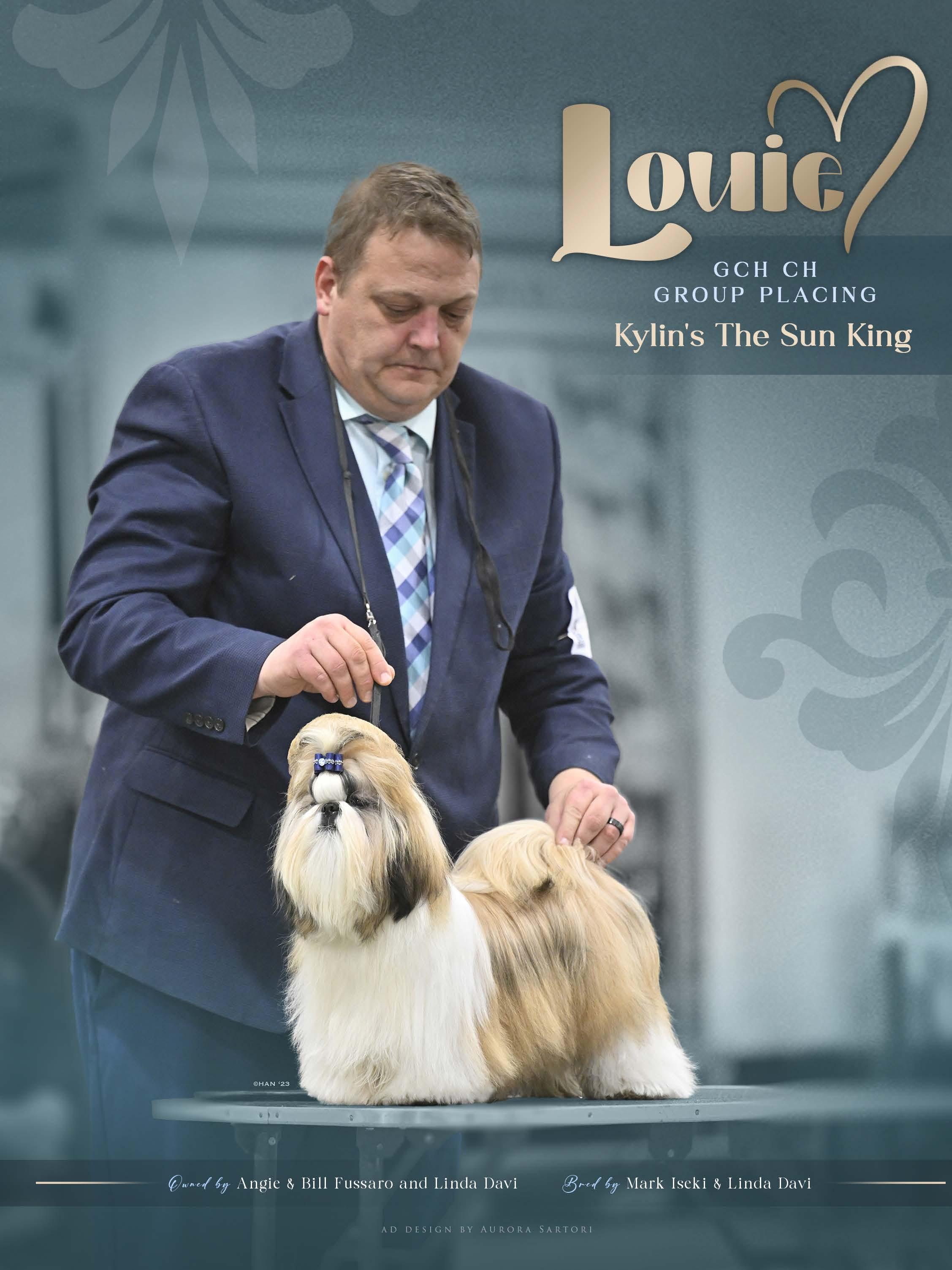
Junior handlers are the future of the sport. Do you feel in general that you and other juniors are treated with the respect you deserve to inspire you to stay in the sport?
There’s a perception among many that junior handlers are merely a way to keep kids occupied and out of the way at dogshows.Unfortunately,myexperienceshavesometimes reflected this attitude, with less than ideal treatment from others in the sport simply because I am a junior. I believe juniors deserve to be treated as equals when we’re in the ring with adult handlers, not as less capable or as a nuisance. Respectful interaction is crucial for encouraging younghandlerstocontinuetheirinvolvementinthesport.
Do you have any pastimes outside of the world of dogs?
Outside of dog showing, I enjoy baking and cooking whenever I’m home for an extended period. Recently, I’ve taken up crocheting during my travels. Since I get car sick fromlookingatscreens,crochetingoffersaproductiveand enjoyable way to pass time without feeling nauseous. It’s a calming activity for me, especially after long days, and I love creating things with my own hands. Currently, I’m working on a blanket for each day we travel, which will serve as a memento of my final year in juniors.
What are your own personal future goals in the world of dogs?
After aging out of juniors, my aim is to become a Junior Showmanship judge. In the long term, I aspire to become anall-breedjudge,withthehopeofjudgingbothbreedand juniors at the Chihuahua Club of America Nationals. I also intend to continue co-breeding and handling Chihuahuas. MygoalistocontributepositivelytothebreedIdeeplylove and to do everything in my power to enhance its qualities.

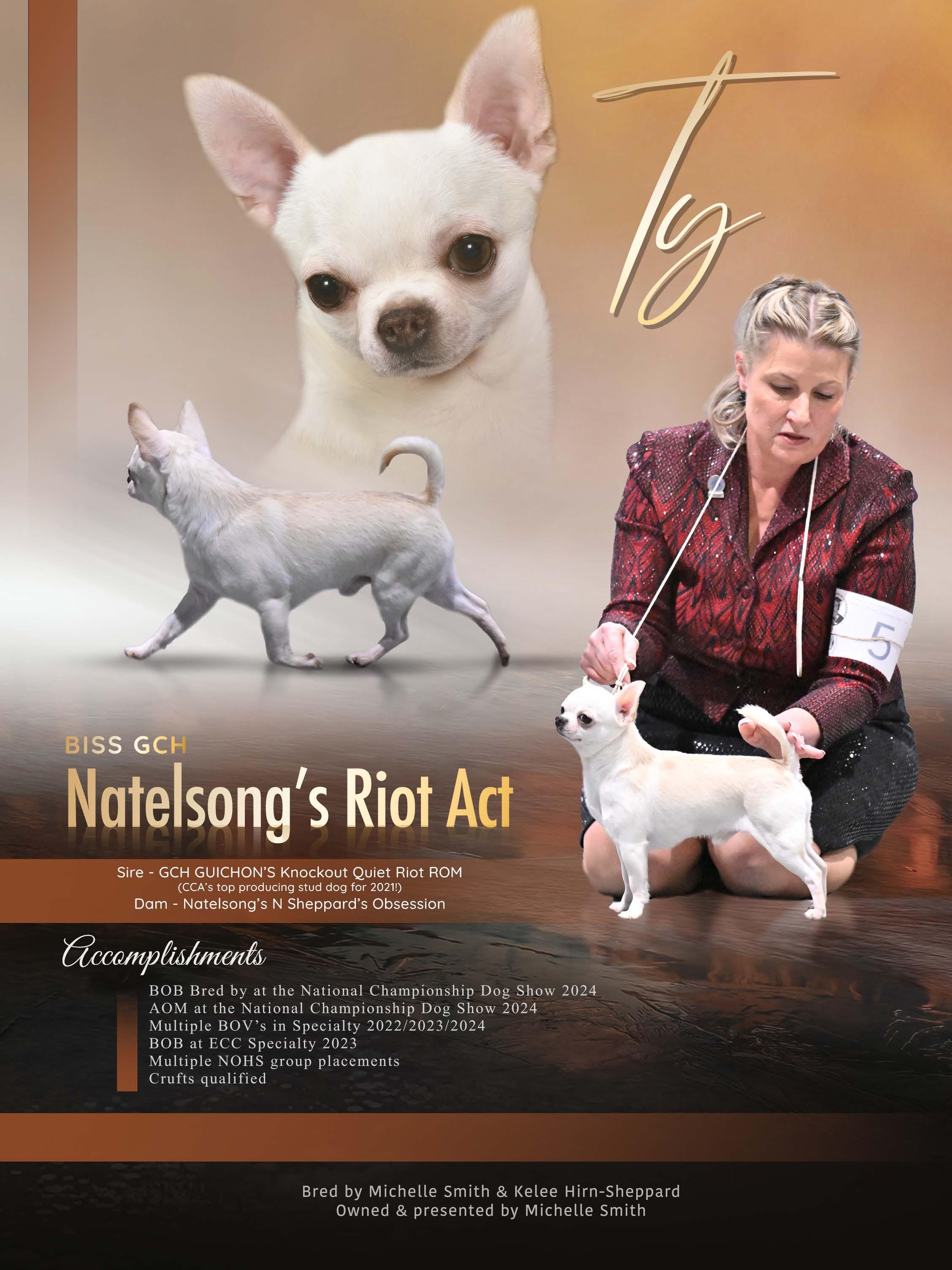


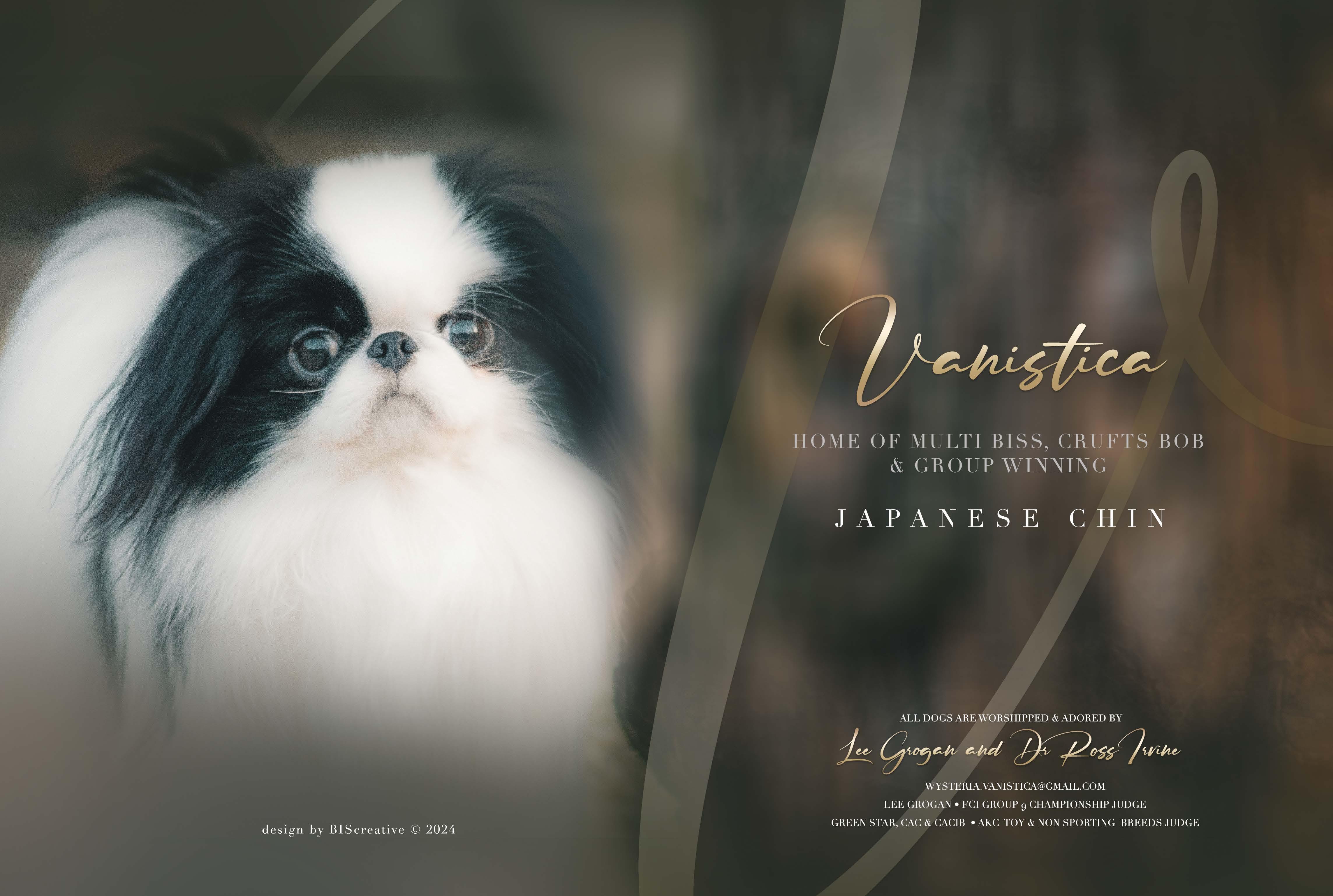




Recently a good friend called to tell me that the dog she was showing in the group was attacked by another dog as they waited for the group dogs to enter the ring. She filed a complaint with the club and after the Bench Committee hearing they determined there was insufficient evidence to press charges. Regardless of whether you think the outcome was fair, what she said next was of more immediate concern to me. My friend immediately blamed the AKC for handing down a judgement she thought was unfair to her and her dog. When I corrected her by reminding her that the AKC really had no opinion on the matter at that point, she
brushed aside my correction and continued to blast the AKC and their disrespect for exhibitors. Again, I reminded her that the Bench Committee was made up of local Club members, not AKC officials. But she was not hearing me. In her mind it was all the fault of the AKC.
Idon’tthinkmyfriendisaloneinhermisunderstanding ofhowtheAKCsystemworks,andwhyitisimportantto knowthesethings.Manyyoungexhibitorsseemtohave the same misperception that the AKC is responsible for everything, good and bad, that happens at a dog show.
I think the natural outcome of this misperception is that the AKC gets blamed for a lot of things they really didn’t do. This then leads to a general lack of trust in all things AKC, a them vs us mentality which in turn results in individuals‘ mistrust and unhappiness with the only organization in the country that truly fights to maintain an environment that supports dog shows, breeders and exhibitors. The AKC is rarely the enemy, and most often is the champion of people like me who want to maintain a dog-breeding/showing lifestyle.
The AKC is a club of clubs. That means they do not have individual memberships – no one person may be an AKC member like they are in Canada’s CKC. Clubs are members of the AKC. Membership comes from mostly small local clubs in Companion, Performance and Conformation events. Every club that joins the AKC may be either licensed or full membership. A licensed club may put on shows under AKC rules and guidelines, but they have no ability to participate in AKC operations or decision-making. They do not have a delegate that represents them. Member clubs must apply to the AKC for membership status, and when approved they will be allowed to send a delegate to represent their club to the AKC delegate meetings. Applying for membership is no minimal task. It involves reviews of bylaws and constitutions and club operations. It can take many months to have membership status approved. Local clubs either elect or have board-appointed delegates who are tasked with representing their club’s interests.
All AKC board members are delegates of some local club. They are elected to their board positions by the delegates who attend the meetings (usually around 300). They all come from the ranks of exhibitors,
owners, and sometimes handlers. They’ve all been where you are right now, and their combined experience is a necessary and valued component of the AKC corporation. Right now there are more than 500 delegates and nearly 5,000 affiliated clubs.
A key part of the AKC system is the local member clubs. It is the local clubs that host all of the conformation shows. The only show that is not put on by a local club is the AKC National in Orlando in December. All other shows are planned and put on by a local club of volunteer members. Many of these clubs have to work 2 – 3 years into the future when it comes to hiring judges, renting a space in which to host their shows, and organizing the spaces they have. They are always trying to find volunteers to help steward, run water and other drinks to the rings, park cars and RV’s, organize paid grooming , find caterers to feed the judges and exhibitors, find non-profit groups that can assist with grounds clean-up, advertise the event, bring in vendors and layout their spaces, pick-up and deliver judges to the airport, and plan a club dinner if they have one. There is a lot of work, and most of it is done by dedicated volunteers who enjoy helping out and being among other dog-show-buddies.
I joined my first club when I was 26 years old and have held almost all positions in two all-breed clubs. For the past 30 years I was either show chair or president, or both. I joined my first all-breed club with a good friend and neighbor who was showing Afghans while I was breeding and showing my Bassets. We were quite a team of newbies. Darlyn was a smooth talker who wanted to meet all the right people and be seen in all the right places, and I was a hard worker who was mostly baffled by the way things ran, but a very quick
learner and a quiet observer of who and what made things work. I’ll admit that Darlyn advanced through the power structure a lot faster than I did. She was a great talker and had a smile that could light up a room. But in the long run, I think my approach brought me more long-term benefit. I still have relationships with club members I met in that first club, and I learned a lot of club strategy from some of the old-timers who ran the club. Darlyn became show chair for the huge winter show about 10 years after we joined, and 5 years after that I became the show chair for the smaller summer show. We remained friends until her tragic death 10 years ago.
For the past 45 years working for a dog club has been a priority for me, and ultimately my family. It was a venue to meet other exhibitors, make friends and build relationships based upon mutual interests. I will admit that during my professional years working for the Mayor of Milwaukee, then Executive Director of a United Way my time seemed to be stretched awfully thin, but I do not believe my family ever suffered because of the time we spent working with dogs and dog fanciers. When I built my boarding and grooming facility it became just another venue to continue connecting with dedicated dog fanciers.
Things have changed a lot since I first became active in breeding and showing. Club membership has dwindled to pathetically low numbers, and the people who are running the clubs now are mostly in their 60’s and 70’s. Many clubs are on the brink of folding, and when they do, so will the show they used to put on. Younger people who join a club become quickly frustrated because they don’t want to do things the way they’ve always been done. Experienced club members don’t
feel like younger people respect the trial and error path they’ve taken to get where they are, and are reluctant to let go of the positions they’ve spent years performing in. Dog clubs are not good places to work if instant gratification is a motivator, and that seems to be an issue with younger generations.
IftheAKCisgoingtosurvivewellintothiscenturyitwill need stronger clubs with members who understand and believe in their mission, not just the people who chase the big ribbons. Younger members need to watch and learn from the masters who have come before them, and not be in such a hurry to make it into positions of power. Stronger clubs, not bigger ribbons will result in a strong AKC. We all love the competition and most of us love the breeding and showing. We all need to love what local clubs do to make what we love to do with our dogs possible. So I encourage all exhibitors to join a club – really. And attend the meetings, and listen to the old-timers, and learn stuff you never knew you’d have to know. You’ll appreciate more the volunteers other clubs use, and you might just help to preserve our sport. You’ll make a difference and the rest of us will certainly be grateful for your contribution.
